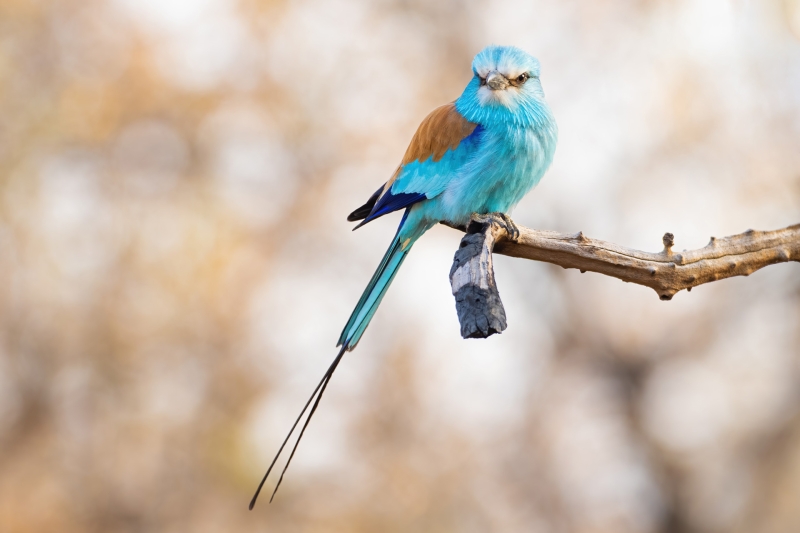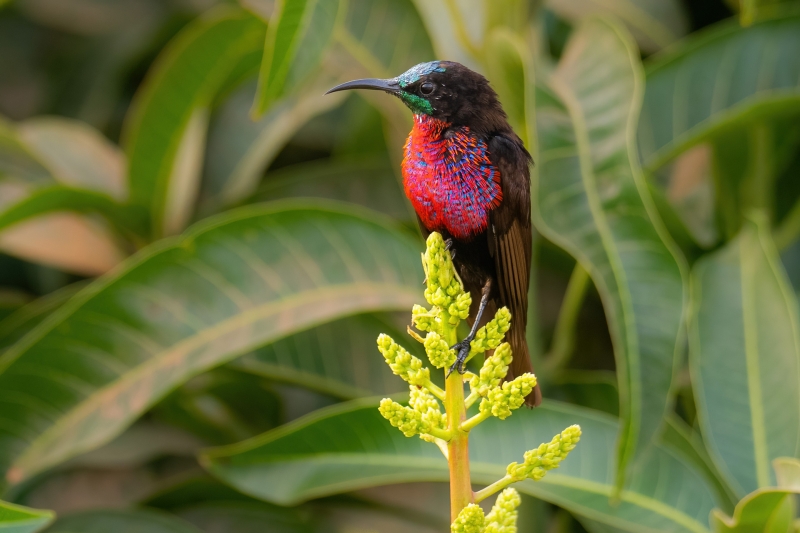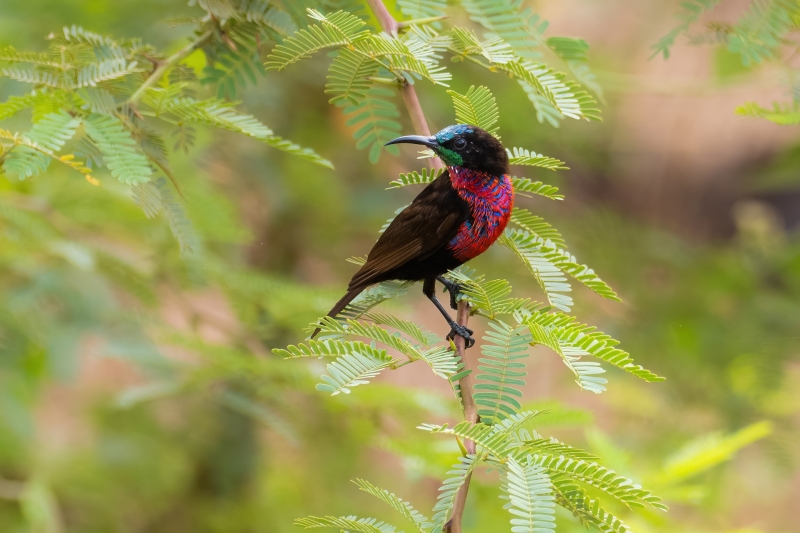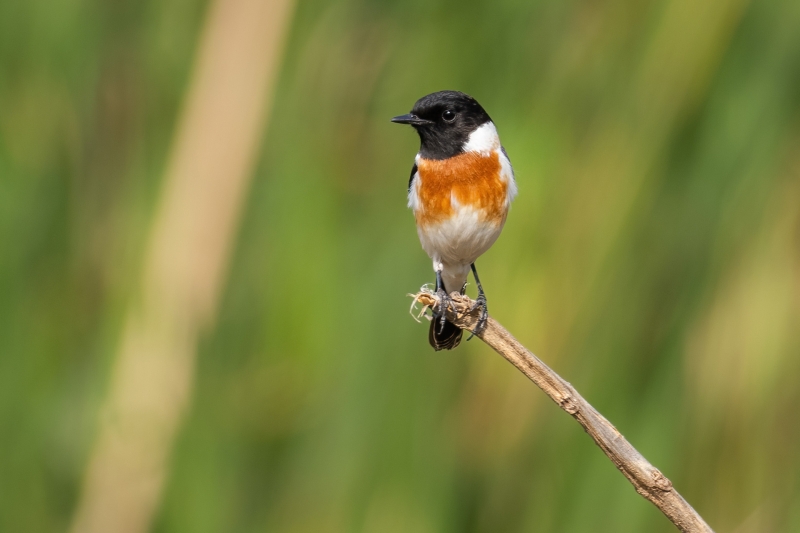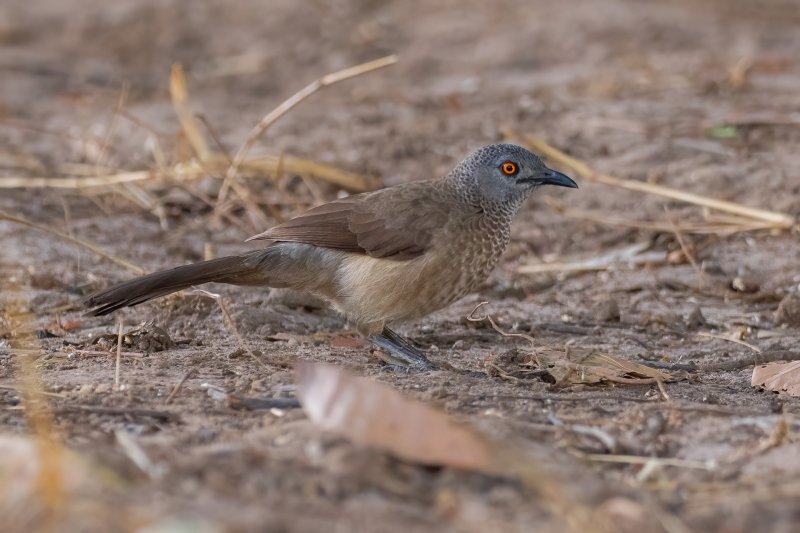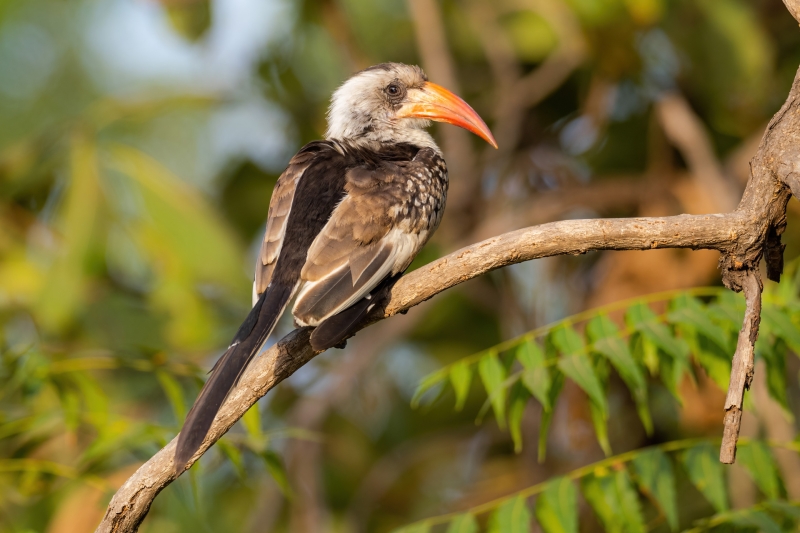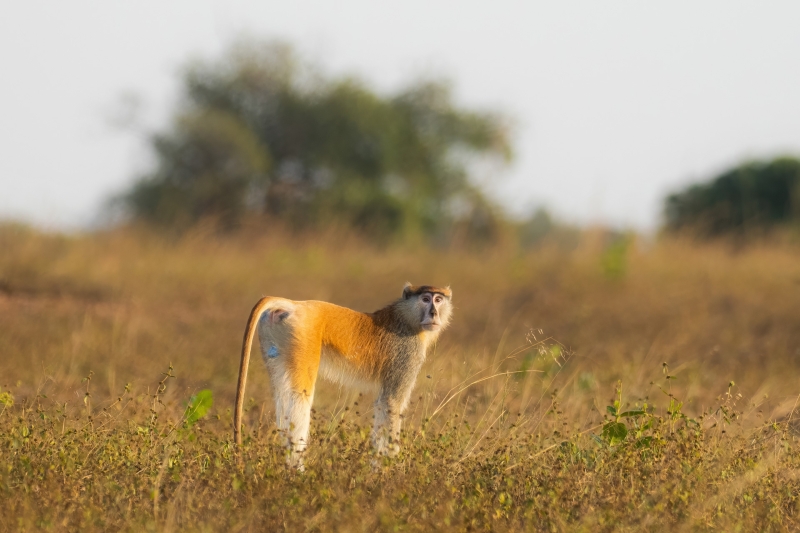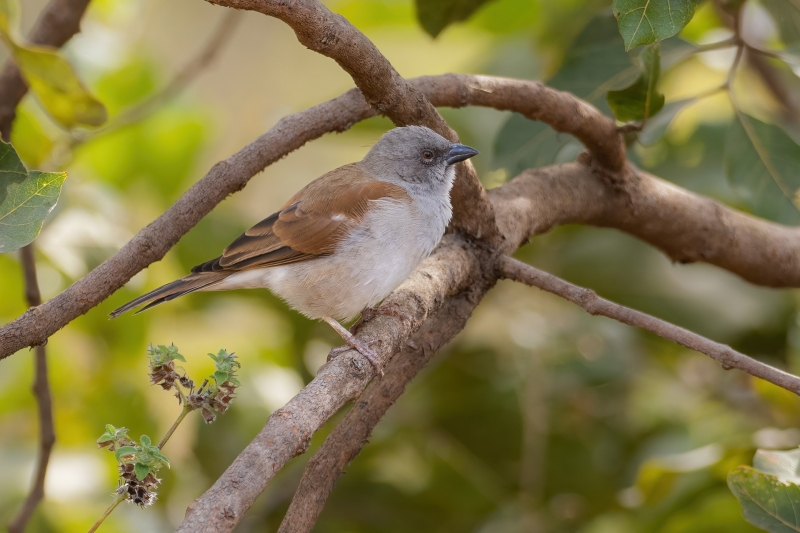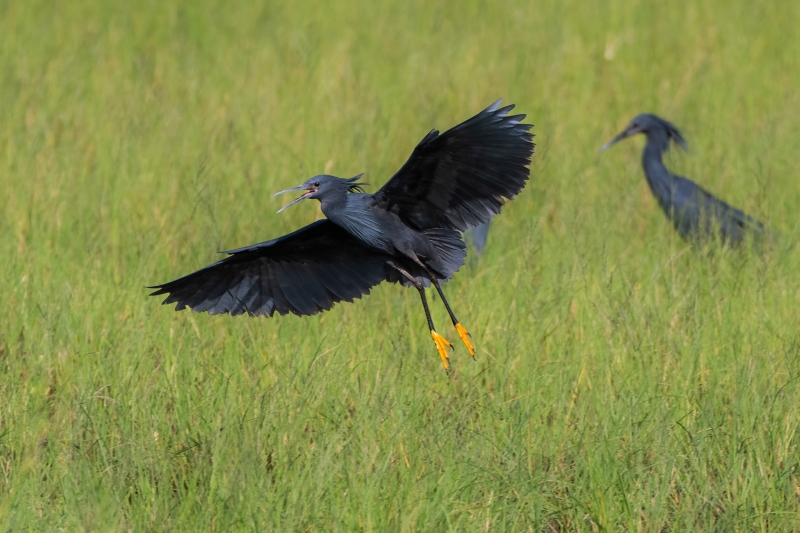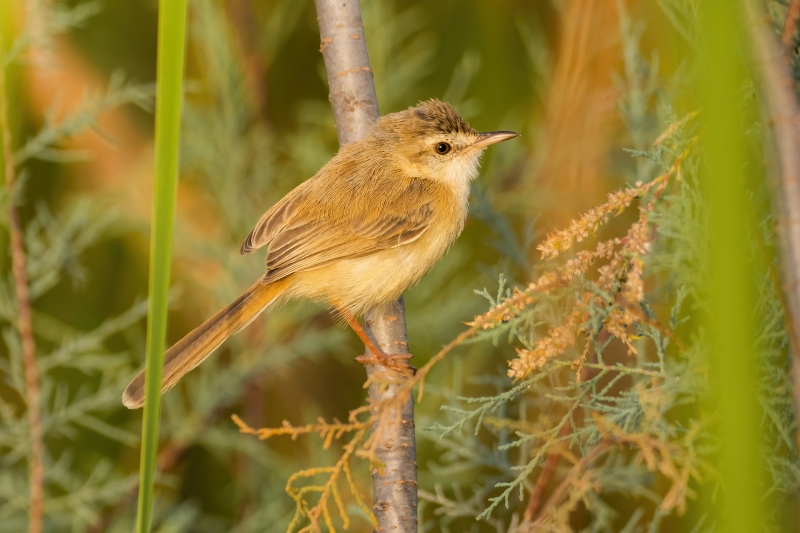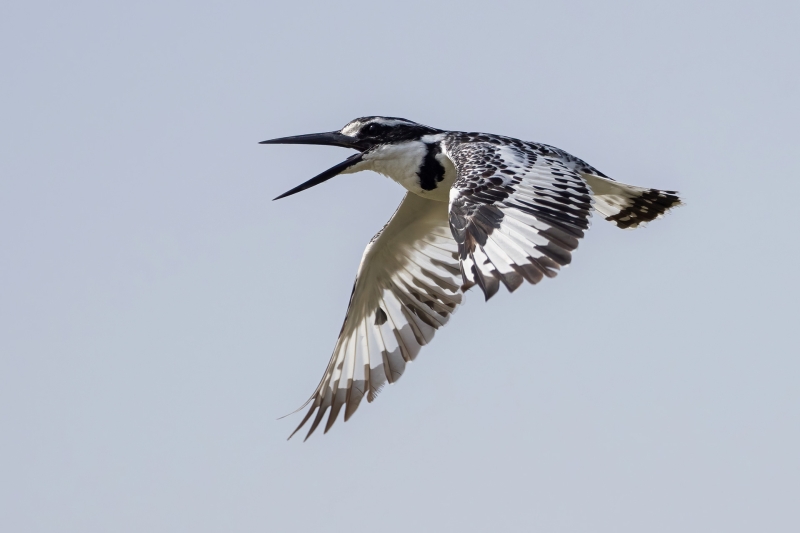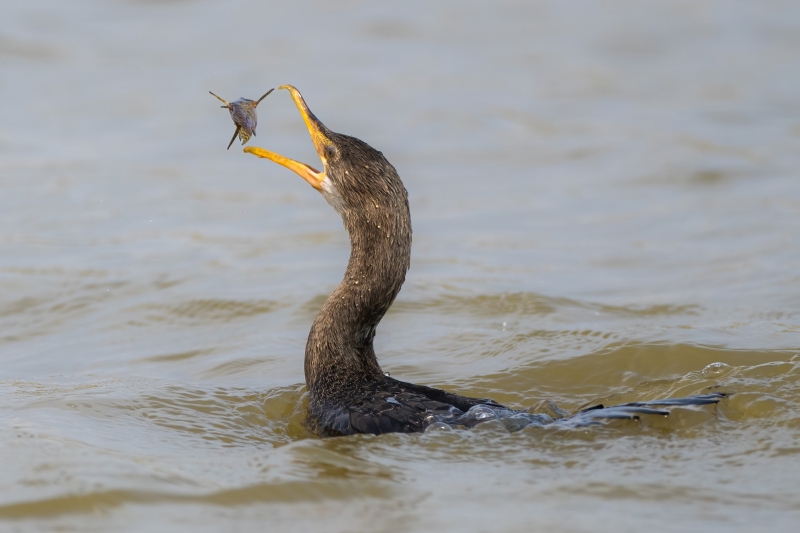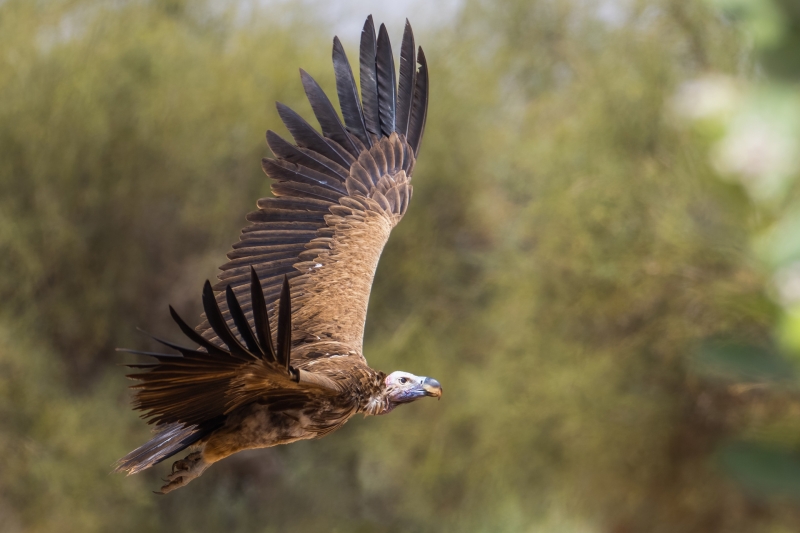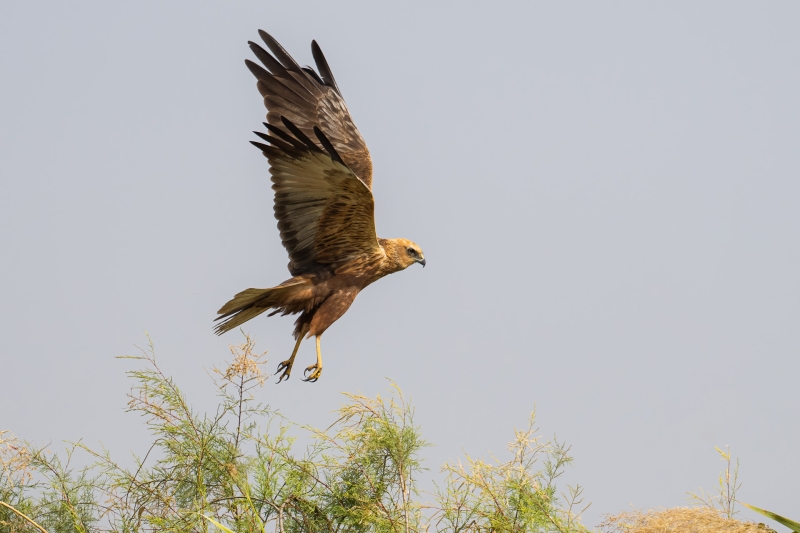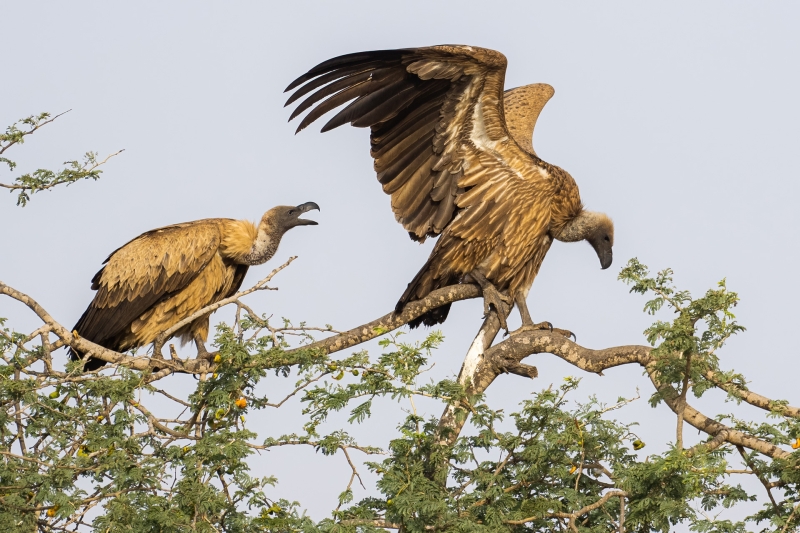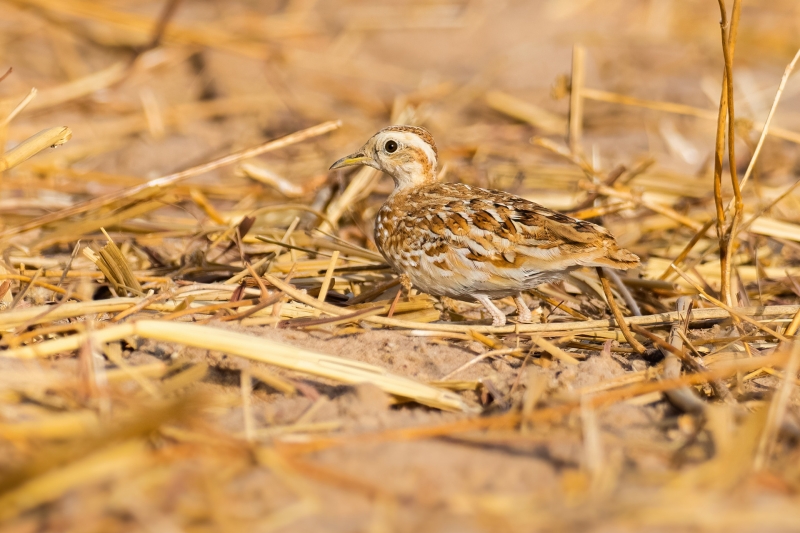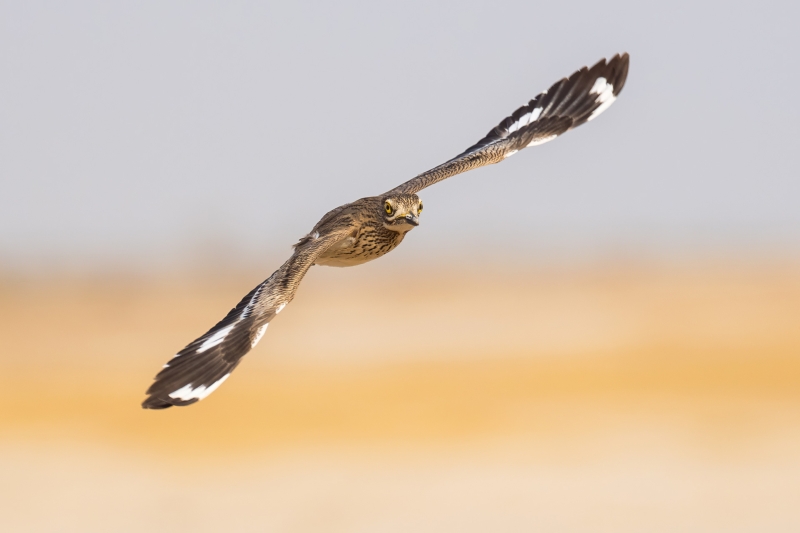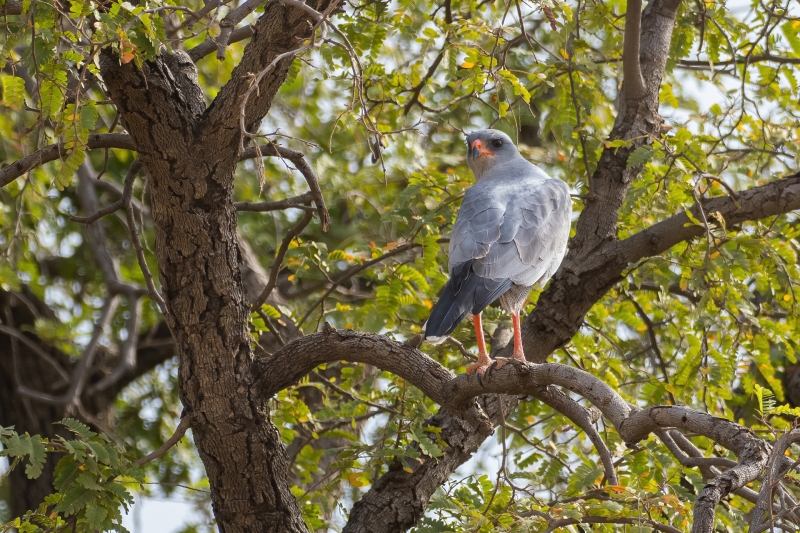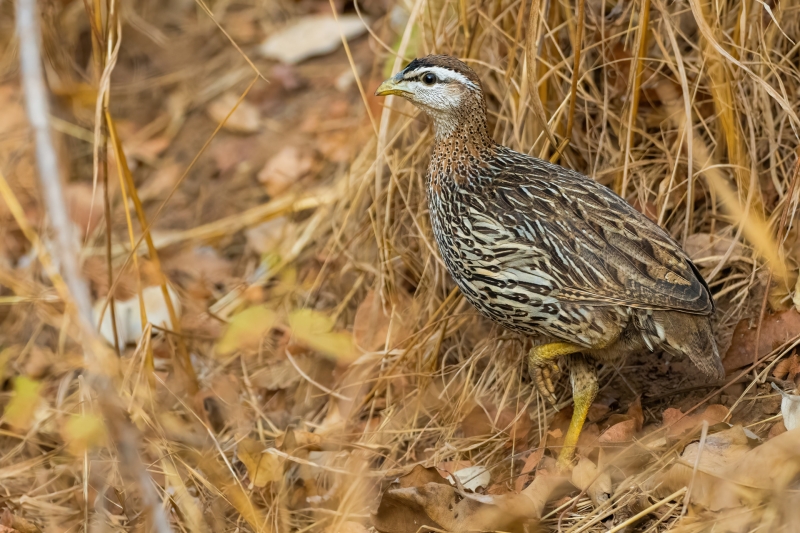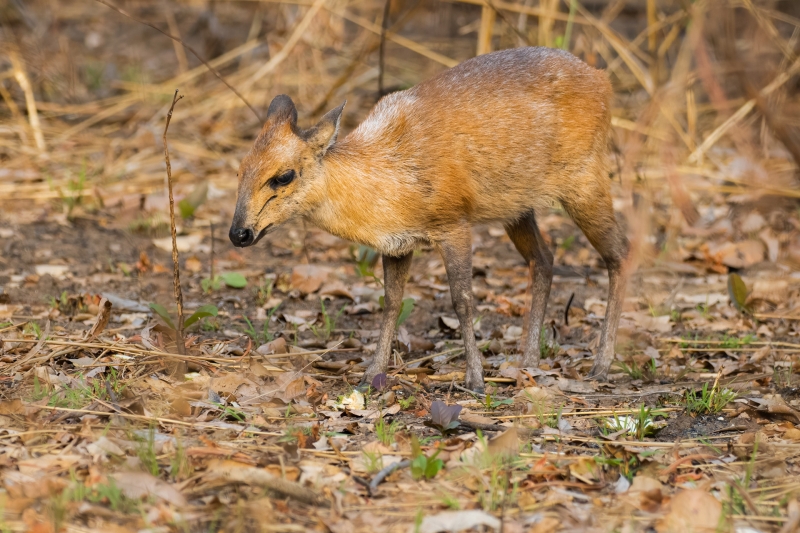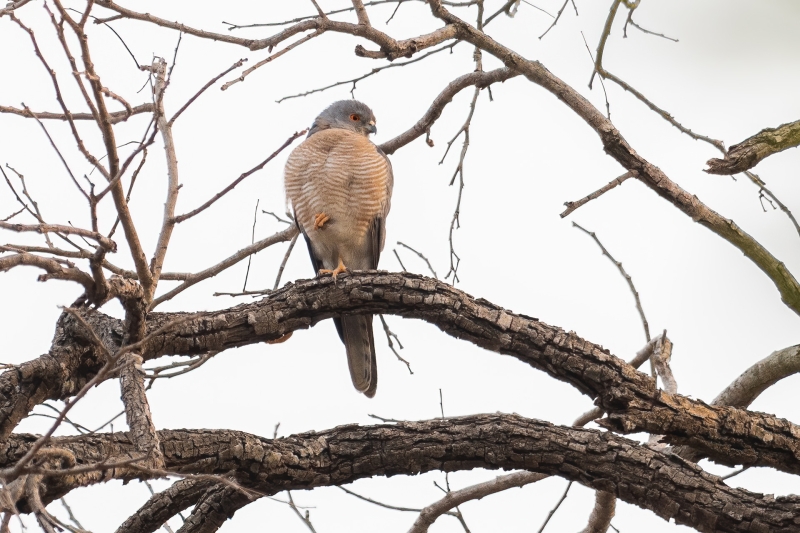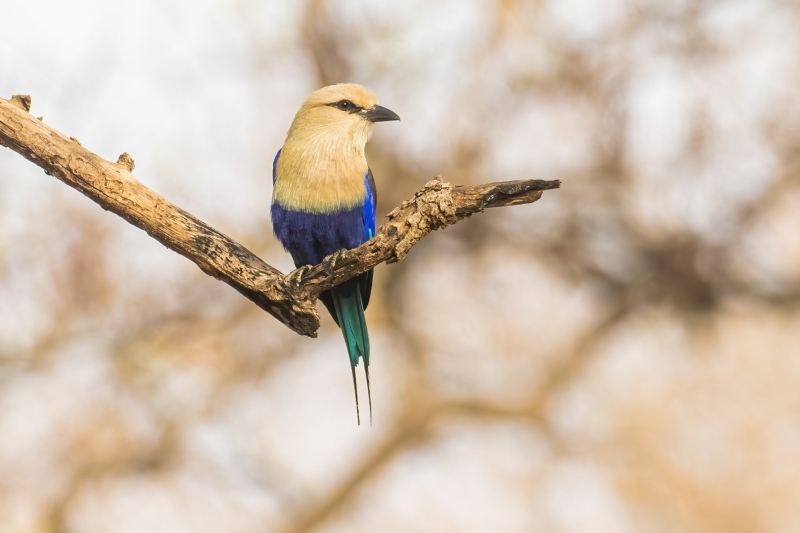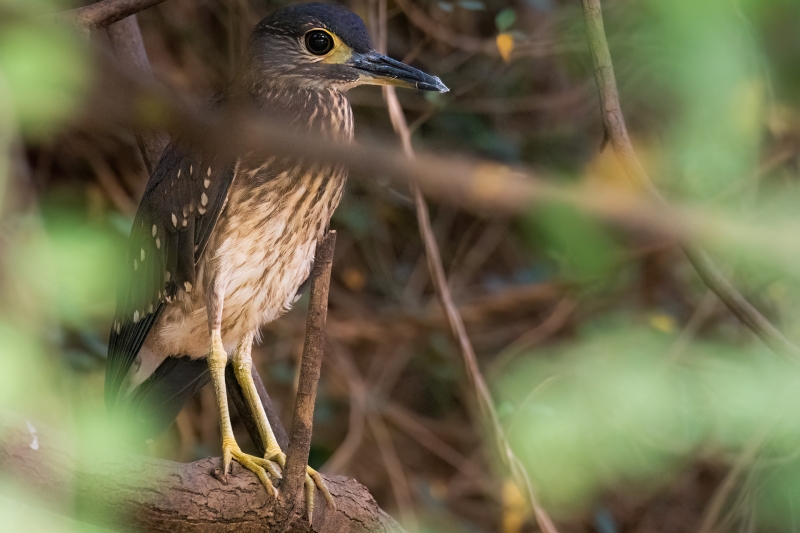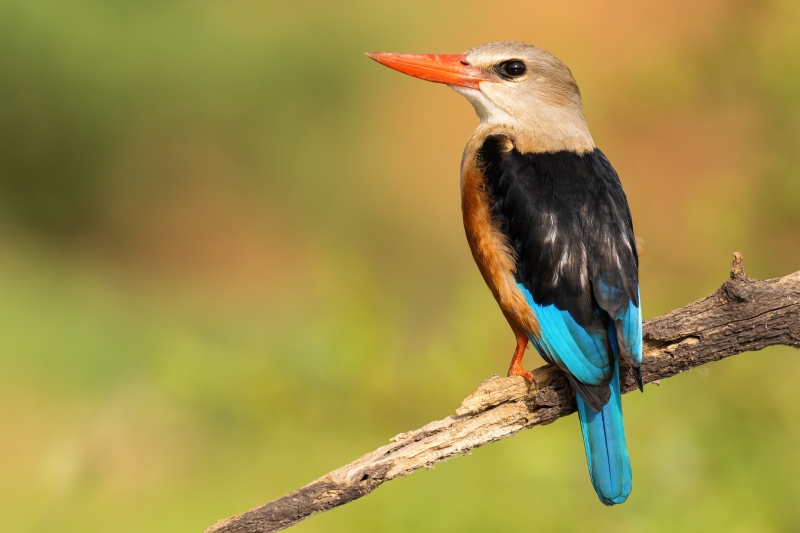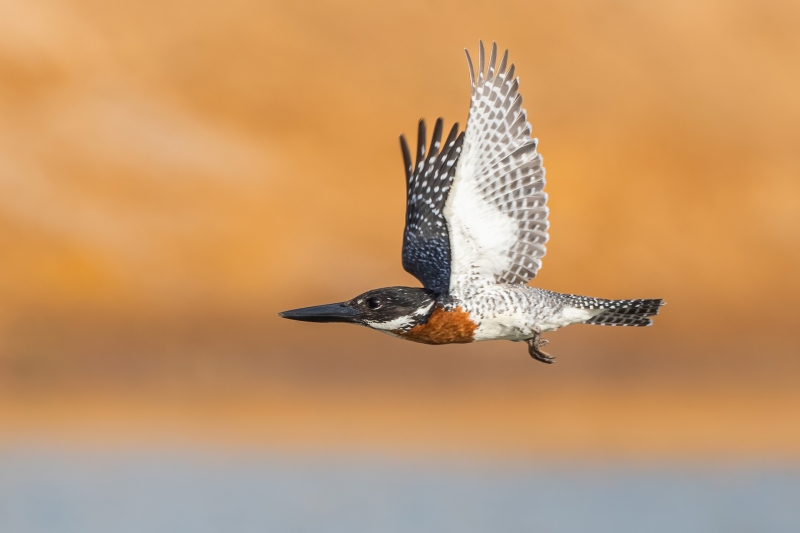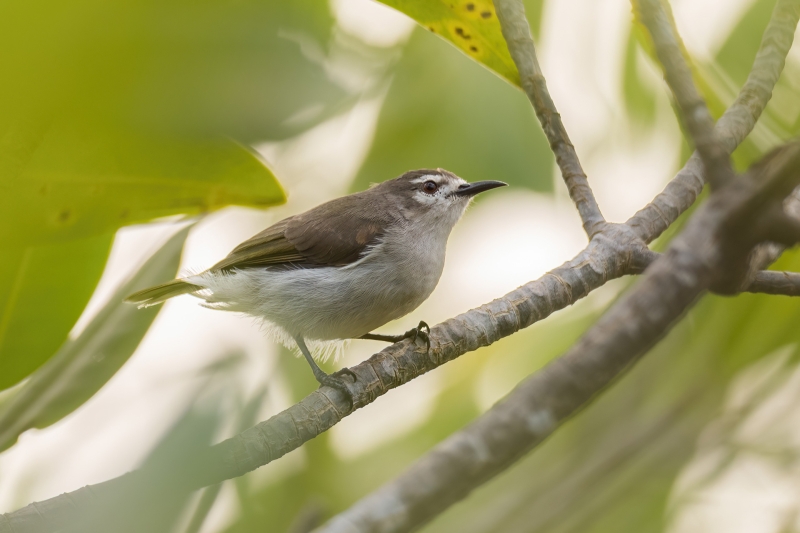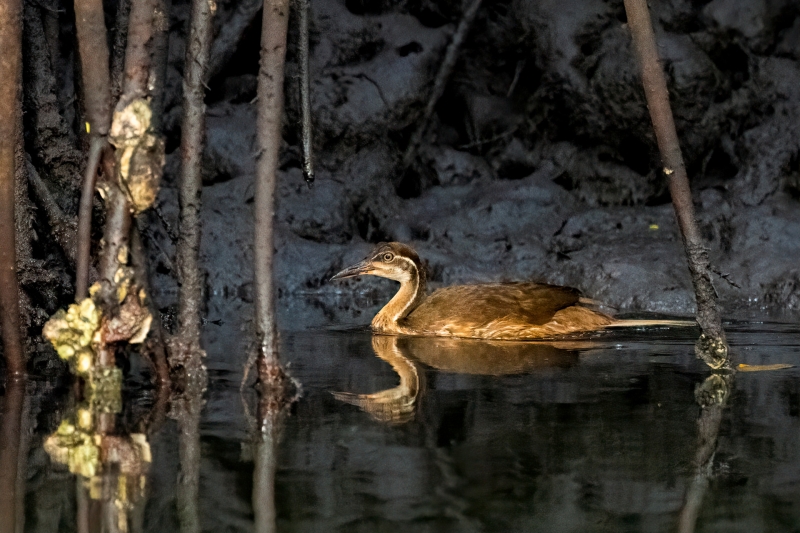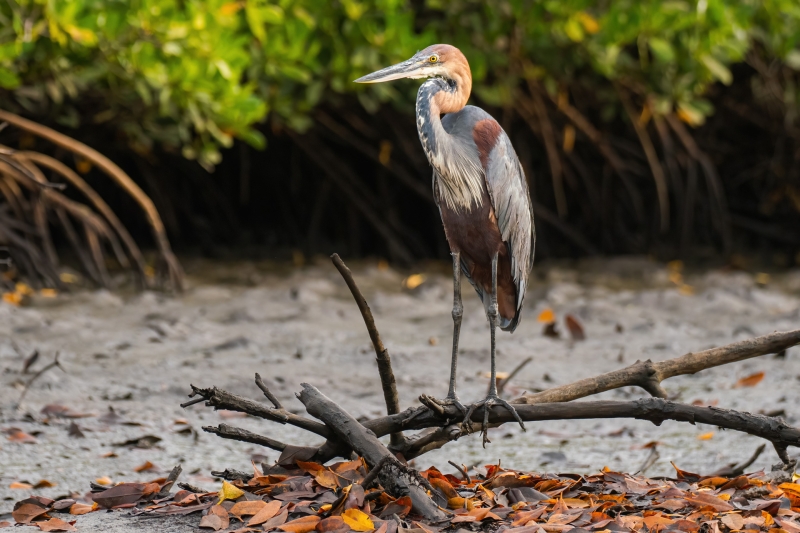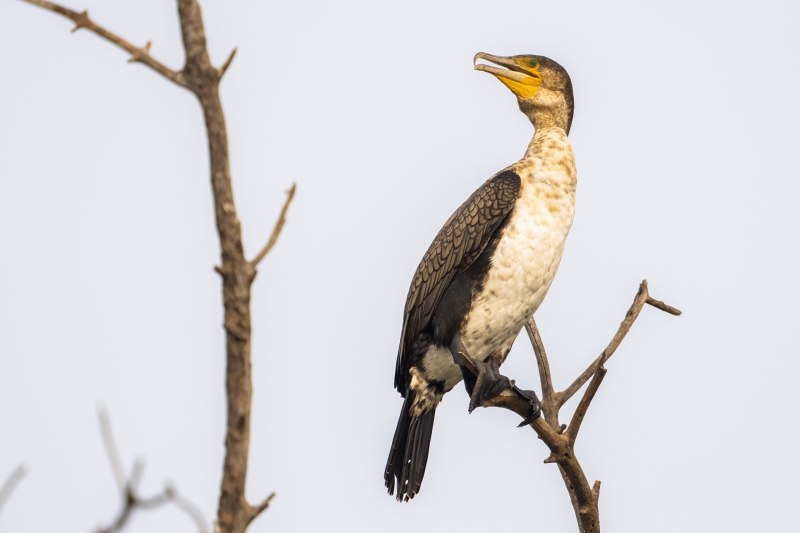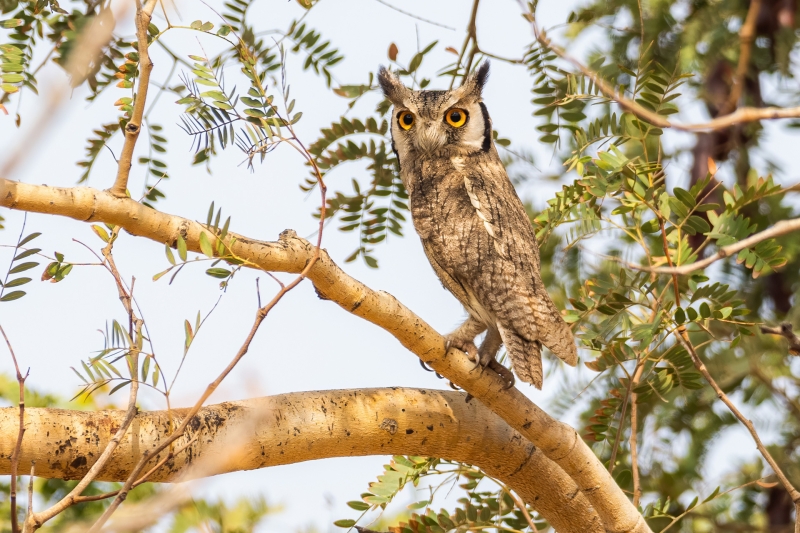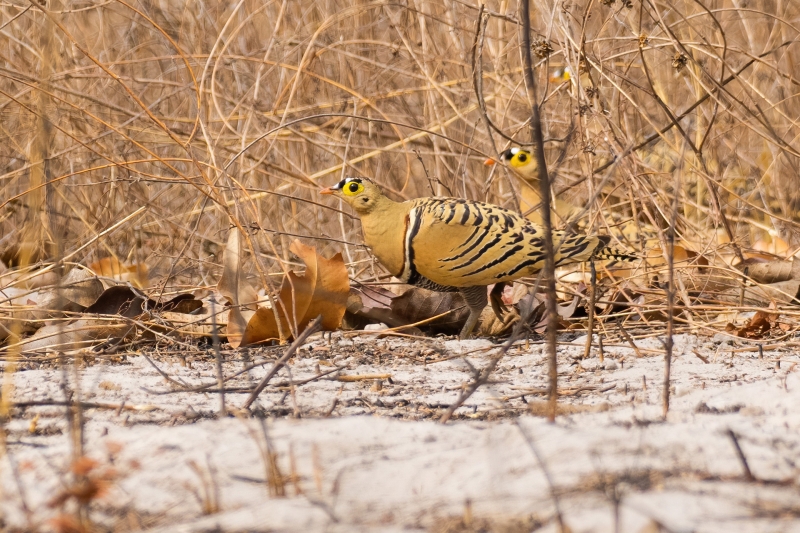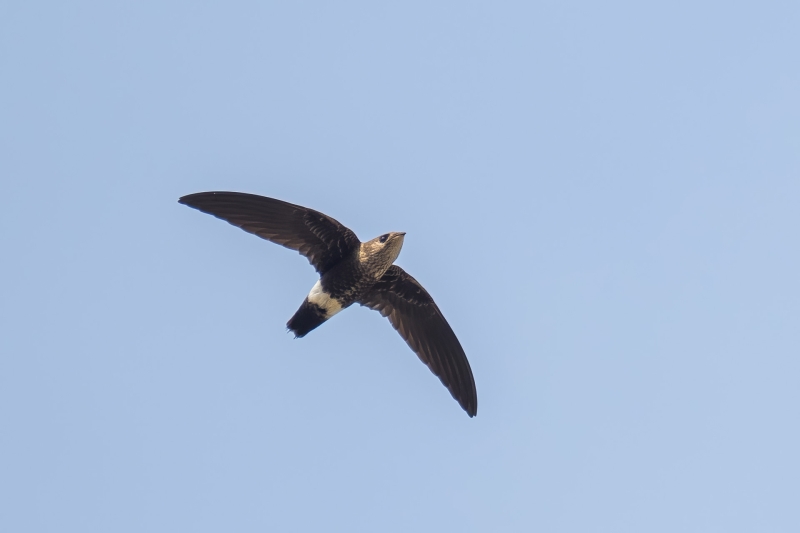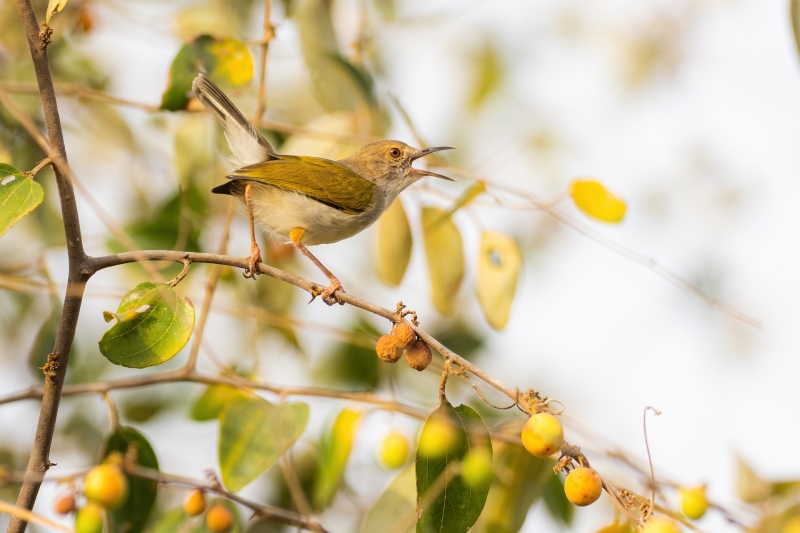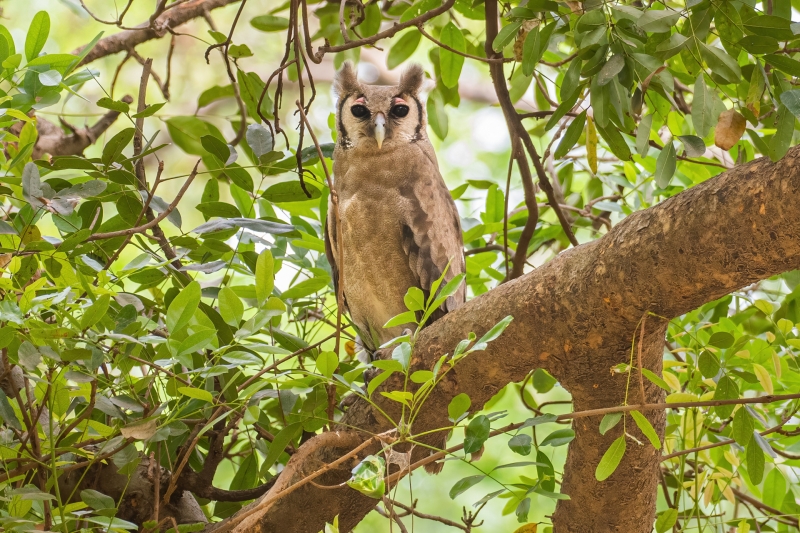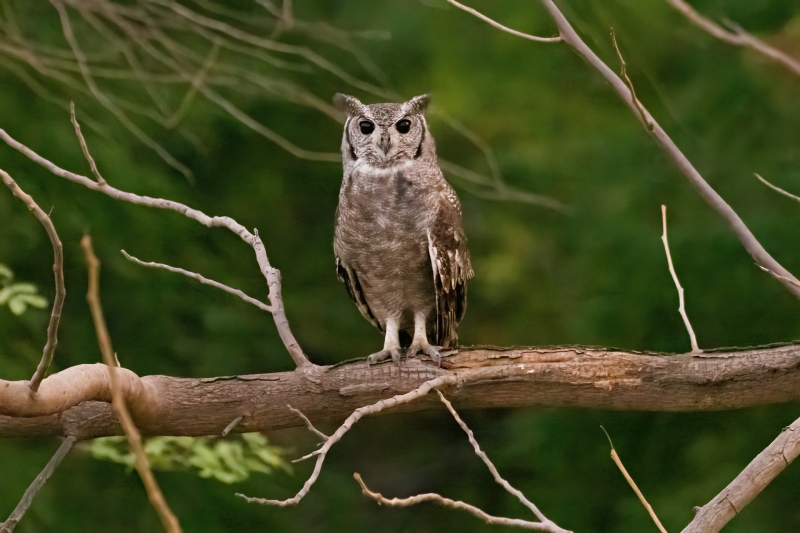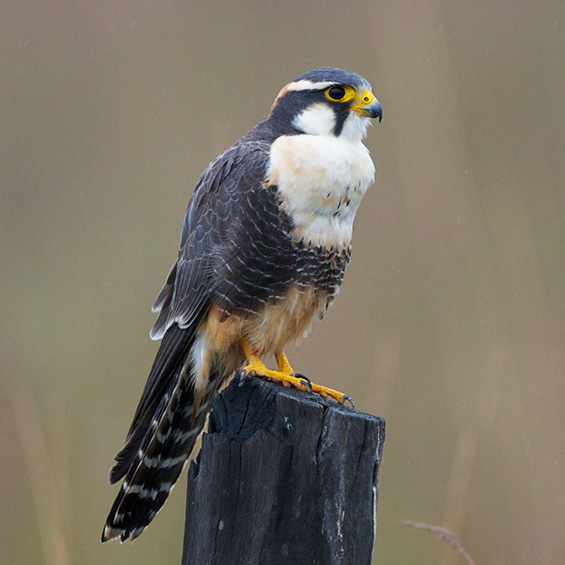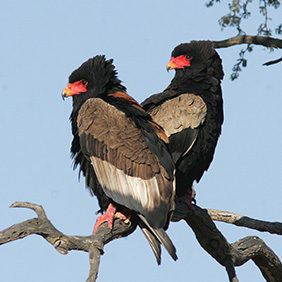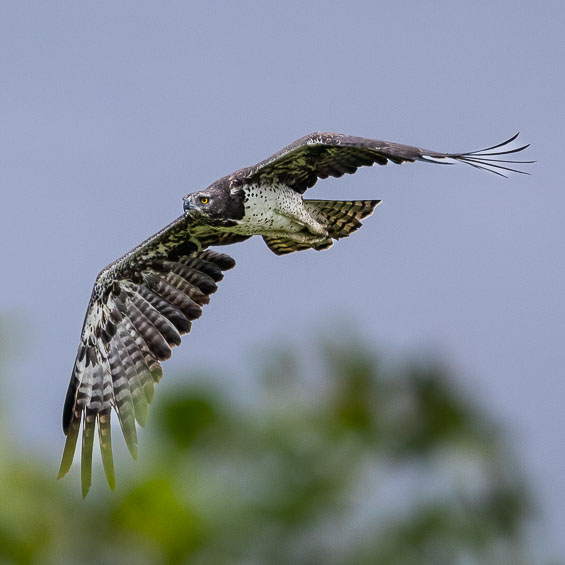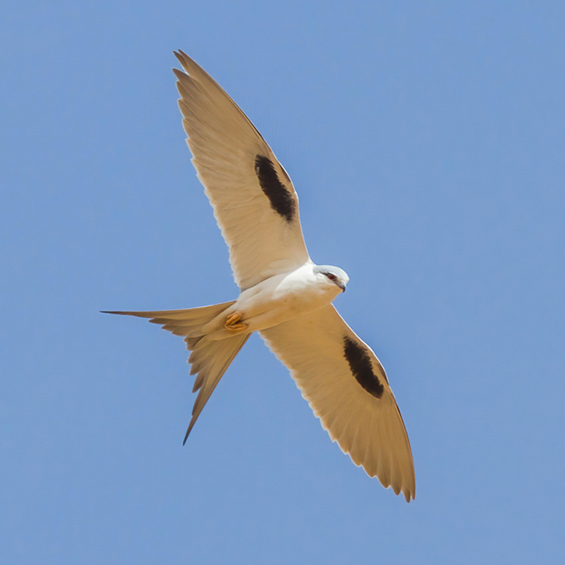2023 sengal tour report
Senegal Raptor Tour Report
1-14 February 2023
by Yeray Seminario
JOIN THE 2024 EDITION OF OUR SENEGAL RAPTOR TOUR
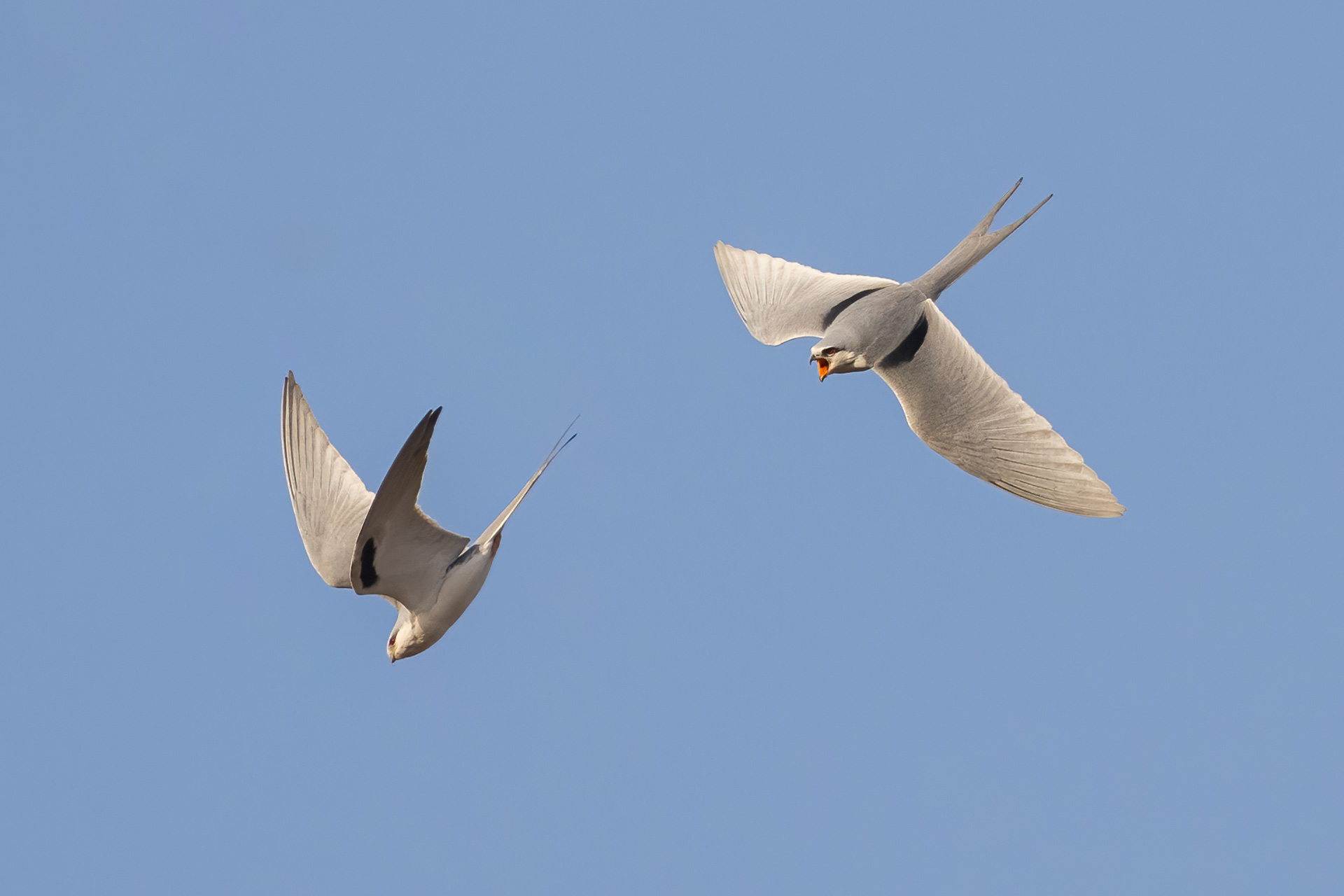
This Raptor Tour was dedicated to exploring a good portion of the country of Senegal, one of the few accessible countries in Western Africa and one of the best for raptors. In addition to the resident species, we were looking for some of the Eurasian migratory raptors that spend their winter in the region. We visited areas in the northwest (Saint Louis & Djoudj National Park), east (Wassadou and Niokolo Koba National Park) and west (Toubakouta and Delta du Saloum). Another main goal for this trip was visiting the roosting site for thousands of Scissor-tailed Kites and Lesser Kestrels, near Kaolack.
While raptors were the focus of this tour, we paid attention to other birds too! Indeed, some of our time was spent looking for sought-after species like Quail-Plover and White-crested Bittern. In addition to a respectable list of birds, we also enjoyed sights of a good number of mammals.
Highlights of this Raptor Tour:
- Reaching up to 34 species of raptors, which included some iconic African species including Bateleur, Martian Eagle and Rüppell’s Vulture.
- In addition to raptors, we ended up with a list of 266 birds (Full list here: https://ebird.org/tripreport/107004) and 19 mammals, including African Golden Wolf, Hippopotamus and Roan Antelope.
- The Boat trip at Djoudj National Park was phenomenal! In addition to thousands of pelicans, herons and egrets, we enjoyed seeing several African Fish Eagles and Eurasian Marsh Harriers.
- Boat trips in Wassadou and Delta du Saloum were also highly enjoyable and some of the favorite experiences for the group on this trip. We got very close to some raptors and took pictures of kingfishers as well as getting some remarkable species like White-backed Night-Heron and White-crested Bittern.
- Finding a carcass with about 80 vultures of 5 different species, allowing us to get at a close distance and being able to see all the fine details of different plumages and ages.
- Witnessing the spectacular arrival at the roost of thousands of Scissor-tailed Kites at Kousmar island.
Day 1 - Wednesday, February 1
Our first day was dedicated entirely to welcoming the participants at the airport and checking in at our hotel near the Dakar airport for a good rest before our drive to the northern part of the country. Upon arrival at the hotel, we were treated to a Red-necked Falcon diving into a large-size acacia, probably hunting for Village Weavers! In addition to the falcon, a myriad of Yellow-billed Kites were welcoming us to Senegal, and they were plentiful during the rest of the trip, particularly near towns and cities.
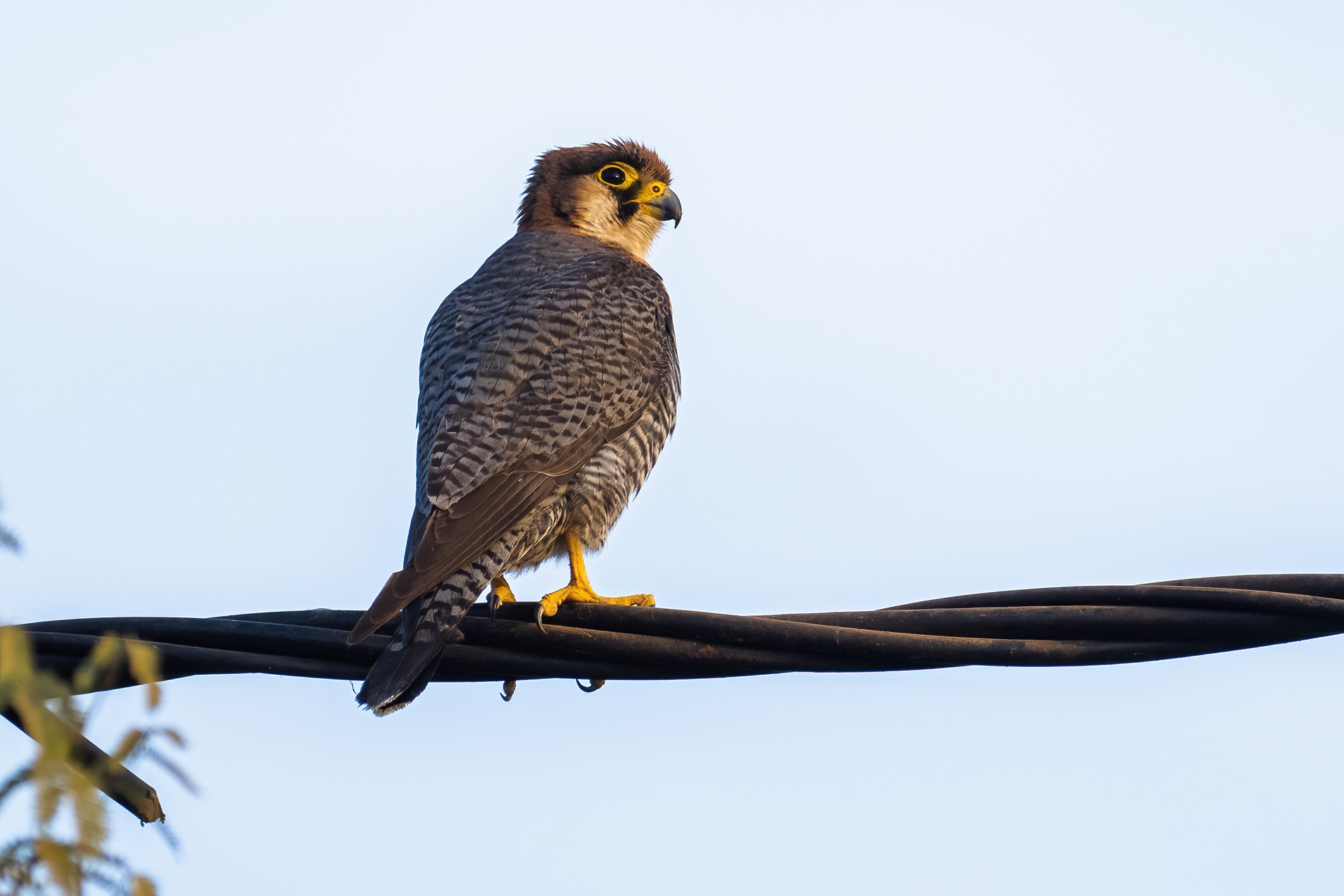
Day 2 - Thursday, February 2
On our first morning in Senegal we drove from the village of Thiés to Saint Louis, where we would spend the following two nights, with several stops for raptors and other birds. Not long after our departure, we stopped to enjoy the presence of two Gray Kestrels near the road, a resident pair, would seem. Here, we also saw the first Lesser Kestrel of the trip as well as our first hornbills, both African Gray and Western Red-billed Hornbill, which, as we would learn soon enough, are very common throughout the country. Along the way we saw the first White-backed Vultures in flight, but not much later, a familiar silhouette was found sitting in an acacia: a Rüppell’s Griffon (later realized there were two) was perched comfortably near the road. We spent a good time observing the vultures and other birds that seemed to be attending to a water hole nearby, until both vultures decided to take off and gave us a great opportunity to appreciate their underwing pattern at close distance. These birds are darker and seemingly more heavily marked than Rüppell’s Griffons in eastern Africa and are a real delight to watch. Not long after, our first Lappet-faced Vulture showed up in flight, although a bit high, so we had to wait for another chance to see them better. Other raptors enjoyed on route were a juvenile Dark Chanting-Goshawk, a migratory Black Kite, and several Hooded Vultures.
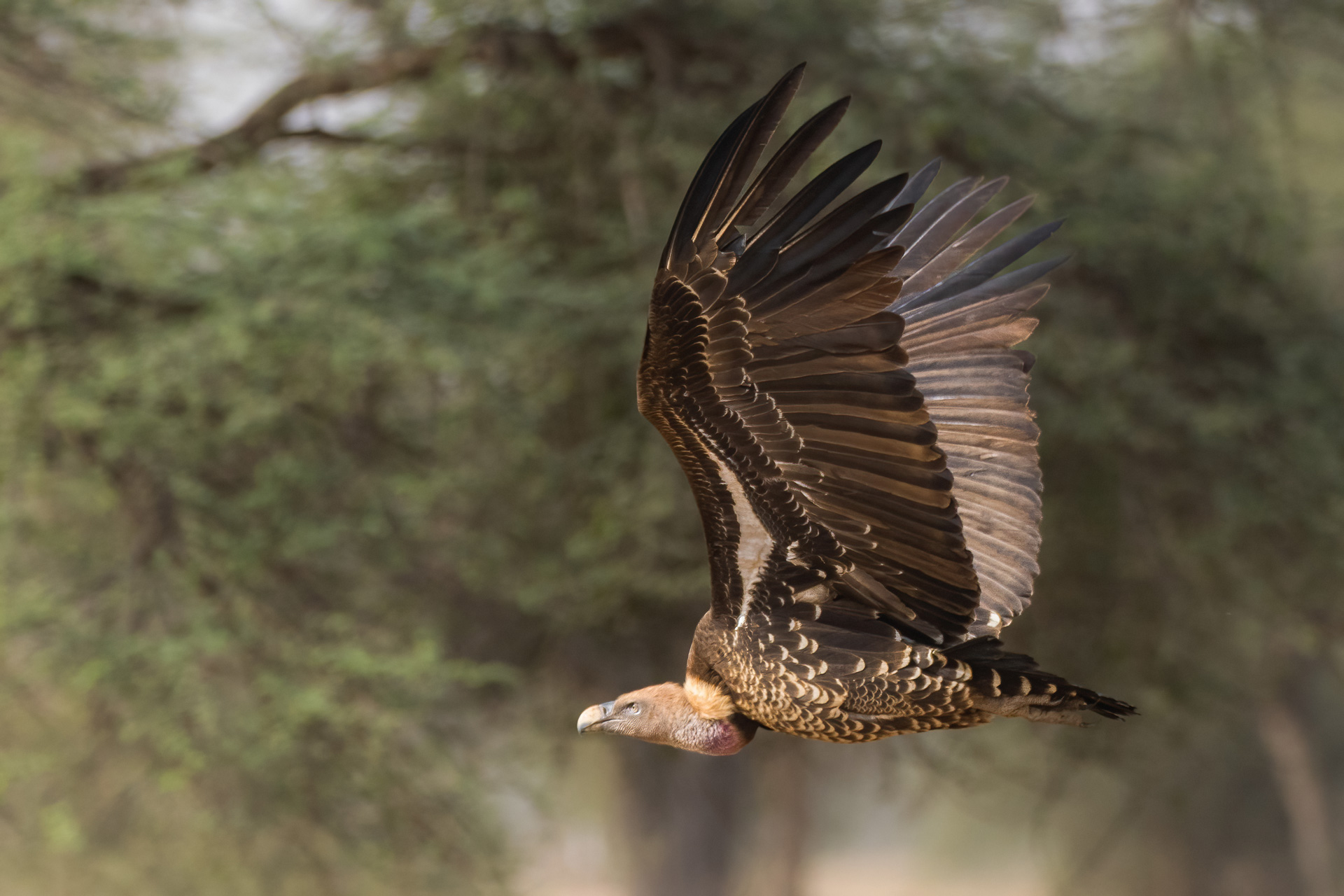
In the afternoon we visited Les Trois Marigots nature reserve, near Saint Louis. Here we saw our first African Fish Eagles and heard their fantastic calls, as well as Osprey (from the nominal subspecies) and a few Eurasian Marsh Harriers. Birds were found everywhere here, and the diversity was high: African Pygmy-Goose, Black-crowned Crane, African Swamphen, Black Crake, and Sudan Golden Sparrow were some of the dozens of species seen here.
Day 3 - Friday, February 3
We had a full day to explore Djoudj National Park, which is one of the most famous nature reserves in Senegal. Before we reached the park, we had one of the few Short-toed Snake-Eagles of the trip, as well as an Eurasian Kestrel. At the entrance of the park, a loud (but melodious) flock of 10,000 plus White-faced Whistling Ducks, welcomed us! In addition to good numbers of shorebirds, like Little Stint and Black-tailed Godwit, we had our first Black-Winged Kite of the trip. Then, we took our first boat trip at the Marigot de Djoudj. This was certainly another highlight of the trip: thousands of Great White Pelicans flying at eye-level and visiting a colony with about 4,000 pairs was impressive, as impressive were the numbers of other waterbirds, egrets, and herons. We also enjoyed with different plumages and ages of several Eurasian Marsh Harriers and more African Fish Eagles, which we couldn’t have enough, including a nest with at least one chick! This was a phenomenal opportunity for the photographers in the group too, who enjoyed endless occasions of birds flying close to our boat. One would think that this was enough for one day, but in the afternoon, we also had some other phenomenal birds, like Greater Painted Snipe, Arabian Bustard, Kittlitz’s Plover (another group’s favorite) and thousands of Greater Flamingoes, among many others.
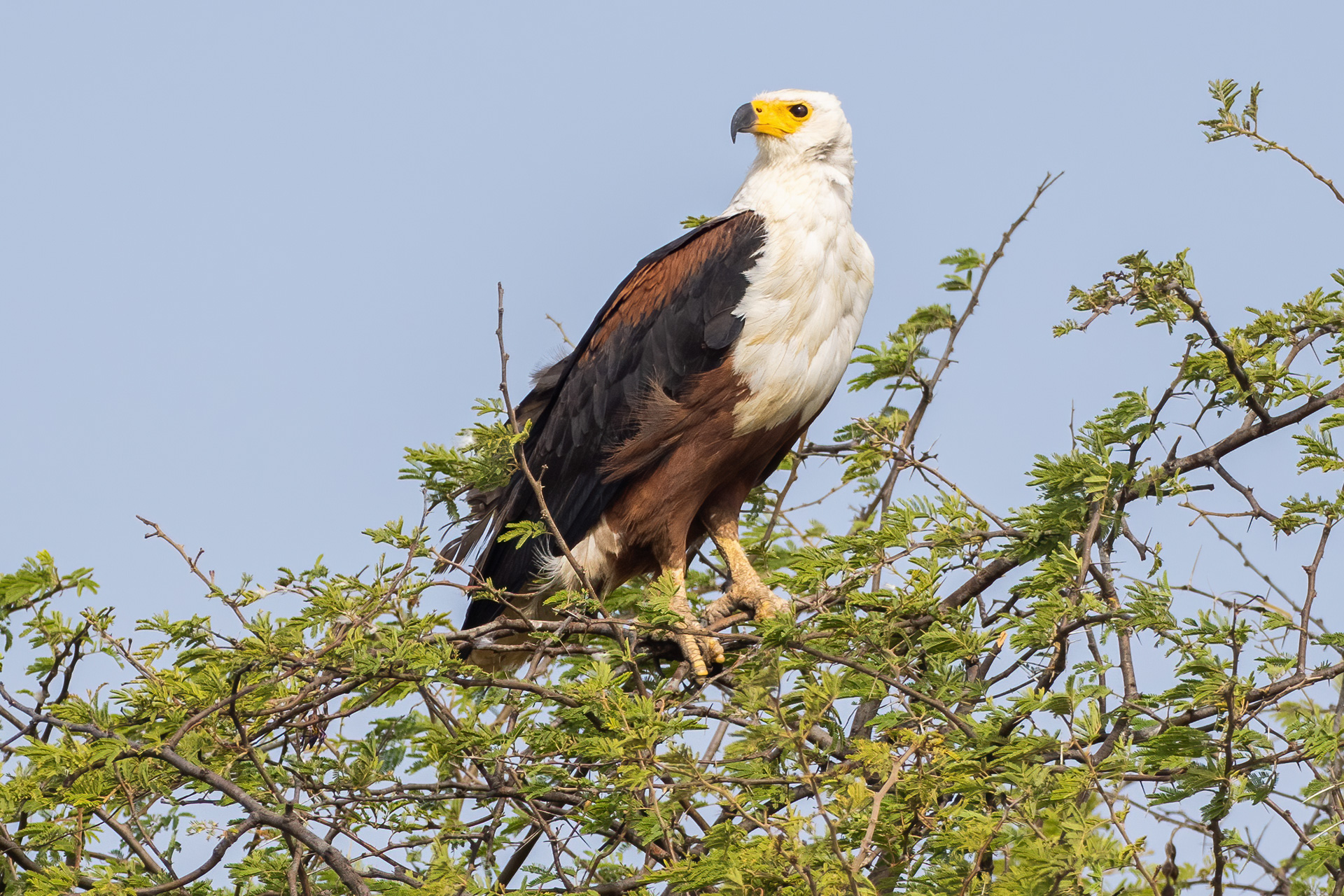
Day 4 - Saturday, February 4
Time to drive back south toward the city of Kaolack, with several stops along the way in search for vultures. The first ones to perform were three White-backed Vultures that we enjoyed at pleasure while they were performing their morning preening routine. Here we also found Striped Kingfisher and some European migrants: Western Bonelli’s and Western Subalpine Warbler. We found more vultures on the way and stopped a few times, but we were hoping to find a carcass with a good number of vultures feeding. Sure enough, not far from Kebemer, we found a carcass attended by about 80 vultures, including Hooded, White-backed, Rüppell’s, Eurasian, and Lappet-faced! Lappet-faced Vultures were the last ones to join the feast, but when they did, they took over what was left of the carcass, dominating with their imposing size.
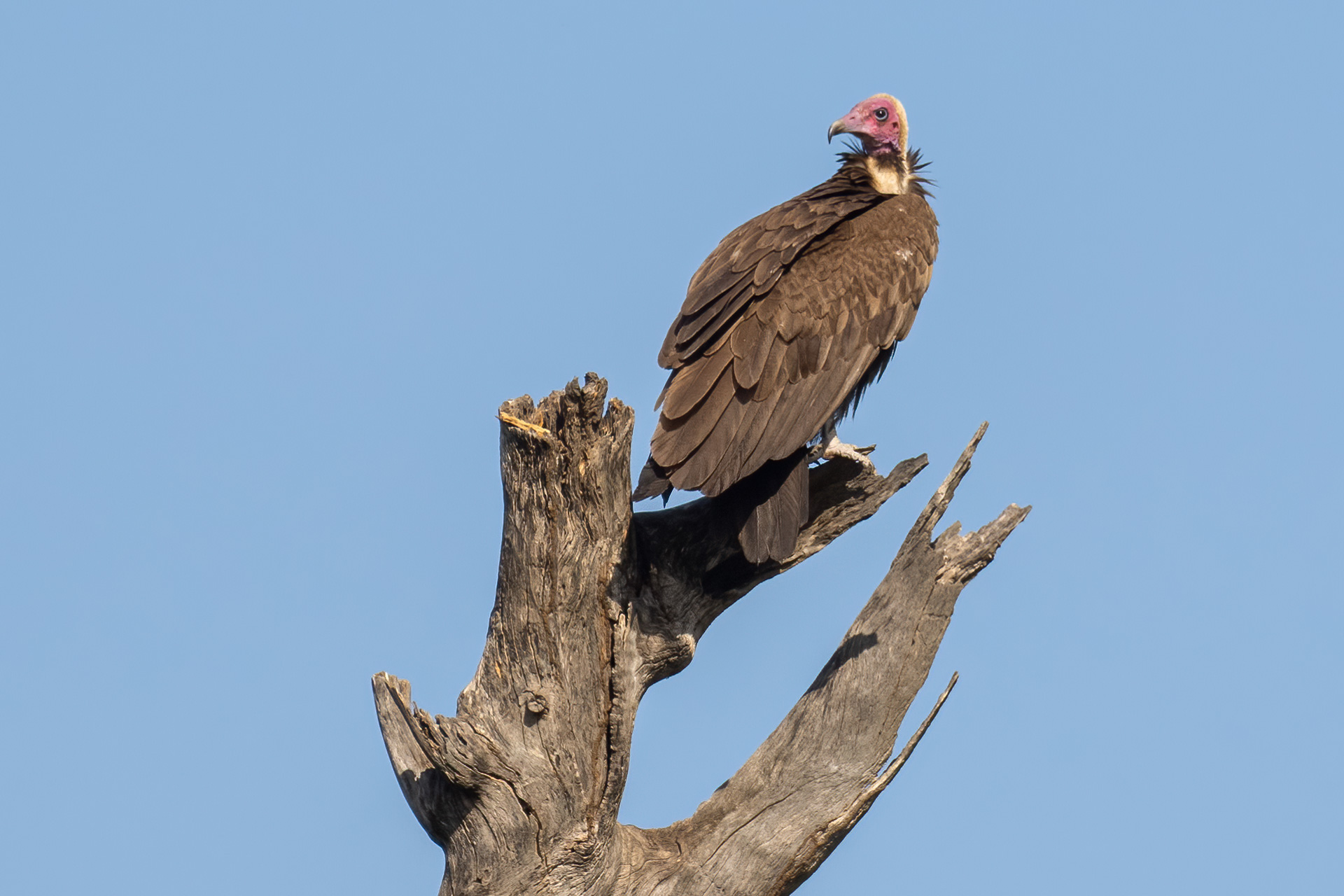
With this experience still fresh and after a relaxing lunch in Touba, we set ourselves another non-raptor goal: the search for the Quail-Plover. This tiny sub-Sahelian species is always difficult to find, so we took the opportunity and after several tries, we found at least three birds, one being extremely obliging and showing itself in the open for several minutes for us to see it and photograph it.
Day 5 - Sunday, February 5
We woke up in Kaolack with our mind set in the roosting site of the Scissor-tailed Kites, but before that we still had almost a full day to explore the vicinity of the city. Soon after leaving the hotel, we found a Red-necked Falcon at close quarters, perched on a wire and ignoring us completely while we watched and took pictures. Later, we stopped at a water hole where a good number of Great White and Pink-backed Pelicans had gathered with other waterbirds. It was here where we got great views of the stubby Quailfinch, a couple of Black Storks and our first Black-headed Heron. Not only that but we had a Red-necked Falcon feeding on the ground, a Black-winged Kite, and Lesser Kestrel too. Nearby, our first Scissor-tailed Kite was a starter of the great show in the afternoon. On another stop we explored some farm fields and acacia savannah where we found Dark Chanting Goshawk and Montagu’s Harrier. Other birds of interest were six Temminck’s Coursers, one Abyssinian Ground-Hornbill, a surprising Short-eared Owl, and several migrant passerines, like Greater Whitethroat and Northern Wheatear. In our way back to Kaolack for a short break and lunch we even got to find a Verreaux’s Eagle-Owl as it was mobbed by another Dark Chanting-Goshawk!
The afternoon was fully dedicated to visit Kousmar island, where predictably, hundreds or even thousands of Scissor-tailed Kites roost together with a more modest number of Lesser Kestrels. It didn’t disappoint. We had to wait in the shade for a while until the kites made its appearance and started to get down into the trees, but then they could be found all over us. This was certainly another highlight of the trip. Here we also saw the cool-looking Black Scrub-Robin.
Day 6 - Monday, February 6
As we drove out of Kaolack heading to Tambacounda, we could see up to 25 Lesser Kestrels heading out from the roost to their feeding grounds, or even gathering before heading up north to their breeding quarters in Northern Africa and Europe. During our long drive to Tambacounda we stopped whenever we had the chance to find interesting raptors and other birds. This way we found another Verreaux’s Eagle-Owl, several Wahlberg’s Eagles and Dark Chanting Goshawks, Short-toed Snake-Eagle and Brown Snake-Eagle, as well as a couple of African Hawk-Eagles. We also had the opportunity to stop at a very productive water hole where, in addition to the spectacular males of Sahel Paradise-Whydahs, we could watch several raptors in action in their attempt to catch one of the aforementioned whydahs, Chestnut-backed Sparrow-Larks or one of the hundreds of Cut-throats present. This way we could enjoy at pleasure of two Gray Kestrels, up to three Red-necked Falcons and one Gabar Goshawk.
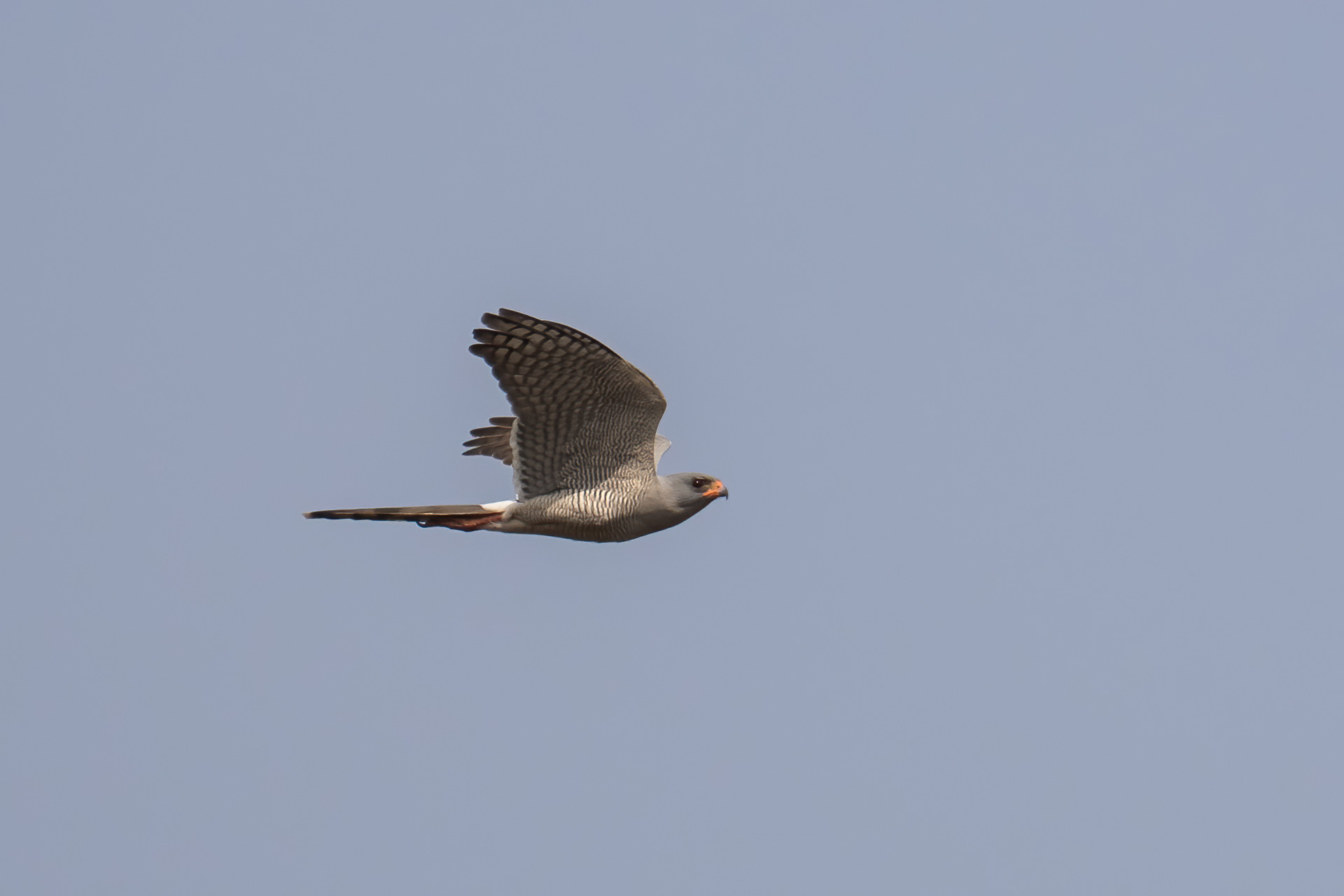
After our lunch in Tambacounda we kept heading to our next destination: Wassadou campsite, by the side of the Gambia river and one of the most popular birding destinations in Senegal. Before reaching camp, we had a couple of the very attractive Lizard Buzzard, one more Wahlberg’s Eagle and a Shikra. Once in Wassadou, shortly before dusk, we had our first African Harrier-Hawk and an impressive number of Northern Carmine Bee-eaters heading to their roosting site. The night was enlivened by Guinea Baboons and Green Monkeys!
Day 7 - Tuesday, February 7
Today was kind of a transition day between Wassadou and Niokolo Koba National Park, but we got the most out of it, I believe. For starters, we had a good early session at the viewpoint in Wassadou, with African Fish-Eagles and African Hawk-Eagles in the vicinity while the regular African Finfoot made appearance and even some Common Hippopotamus and Western Red Colobus monkeys! Then, we took a walk around with the main goal of finding an Egyptian Plover – certainly not a raptor, but a handsome and a must-see species to every birder visiting Senegal and the Gambia. Not only we succeeded with the Plover (which we could see in successive days too) but had a good number of raptors including a brief view of a Bateleur and good views of African Harrier-Hawk, Wahlberg’s Eagle, Lizard Buzzard, Gabar Goshawk, Shikra, and a resident pair of Red-necked Falcons. Not bad for such a short walk!
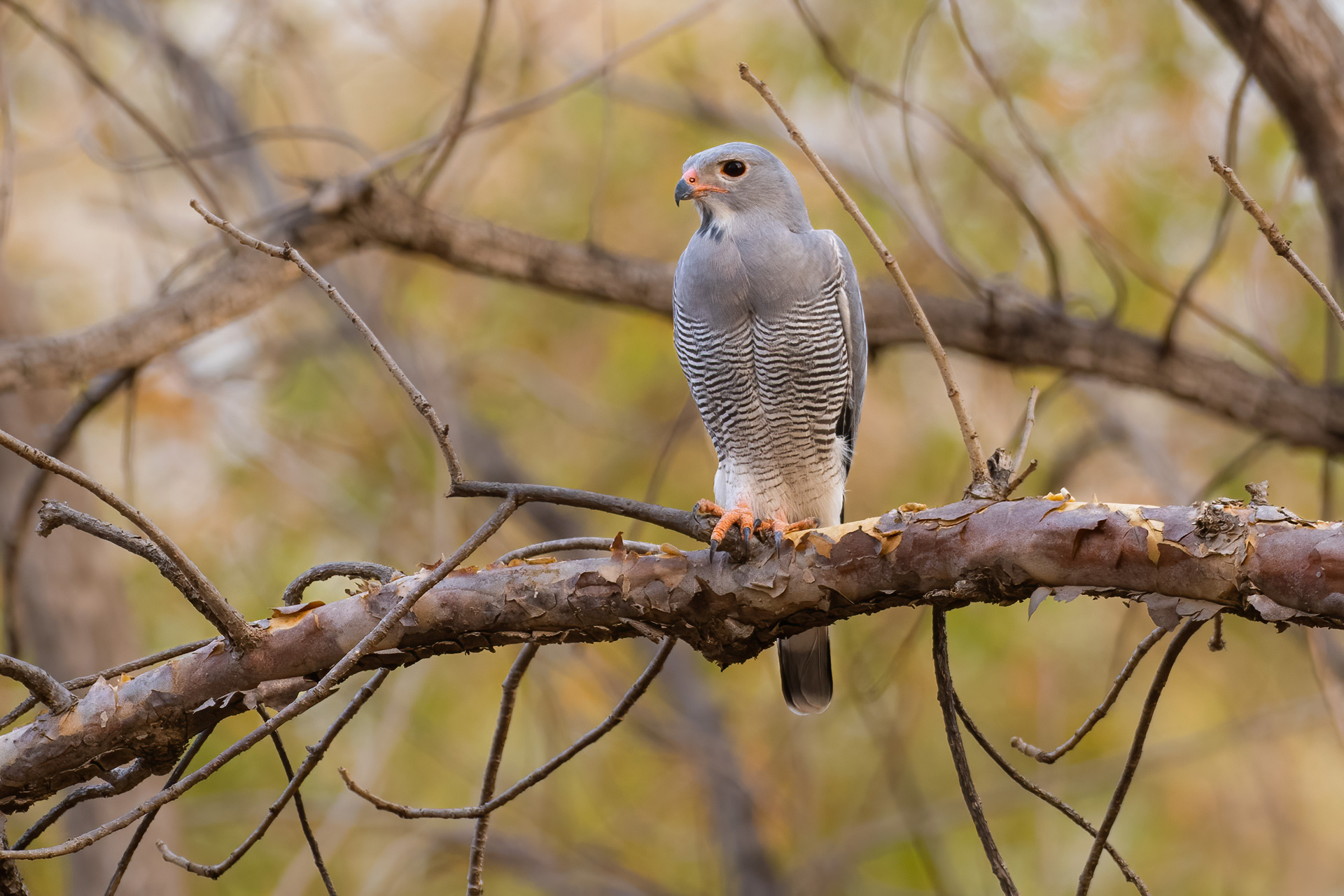
On our way to Niokolo Koba National Park, where we would spend the following two days, we added more birds to our list, but the mammals were the most relevant sightings: Western Bushbuck, Western Oribi, Buffon’s Kob, Defassa Waterbuck and Maxwell’s Duiker. After a long drive on an adventurous track and once in our destination, Simenti campsite, we spent some time by the Gambia riverbed, and had great observations of Shikra and more Hippos.
Day 8 - Wednesday, February 8
We had a full day in Niokolo Koba National Park, which we used to visit several open flooded ares called Mares, as well as some viewpoints near the river, all with the purpose of finding raptors soaring above. Before we even left camp, Shikra and Red-necked Falcon were seen, together with some nice Violet Turacos and our first White-headed Lapwing. However, some of the best moments of the day were spent a bit further up the river Gambia, where we had great views of two Bateleurs and two Palm-nut Vultures, which were some of the most sought-after raptors by the group. Other much-celebrated birds on this stop were a brilliant African Golden Oriole and a Gray-headed Kingfisher. Then, we kept moving and exploring the open areas, finding a variety of raptors and other birds, including some new for the trip, like African Woolly-necked Storks and, most notably, the Beaudouin’s Snake-Eagle. The observation of the snake-eagle, however, was not very good, so we needed to find another one for better views.
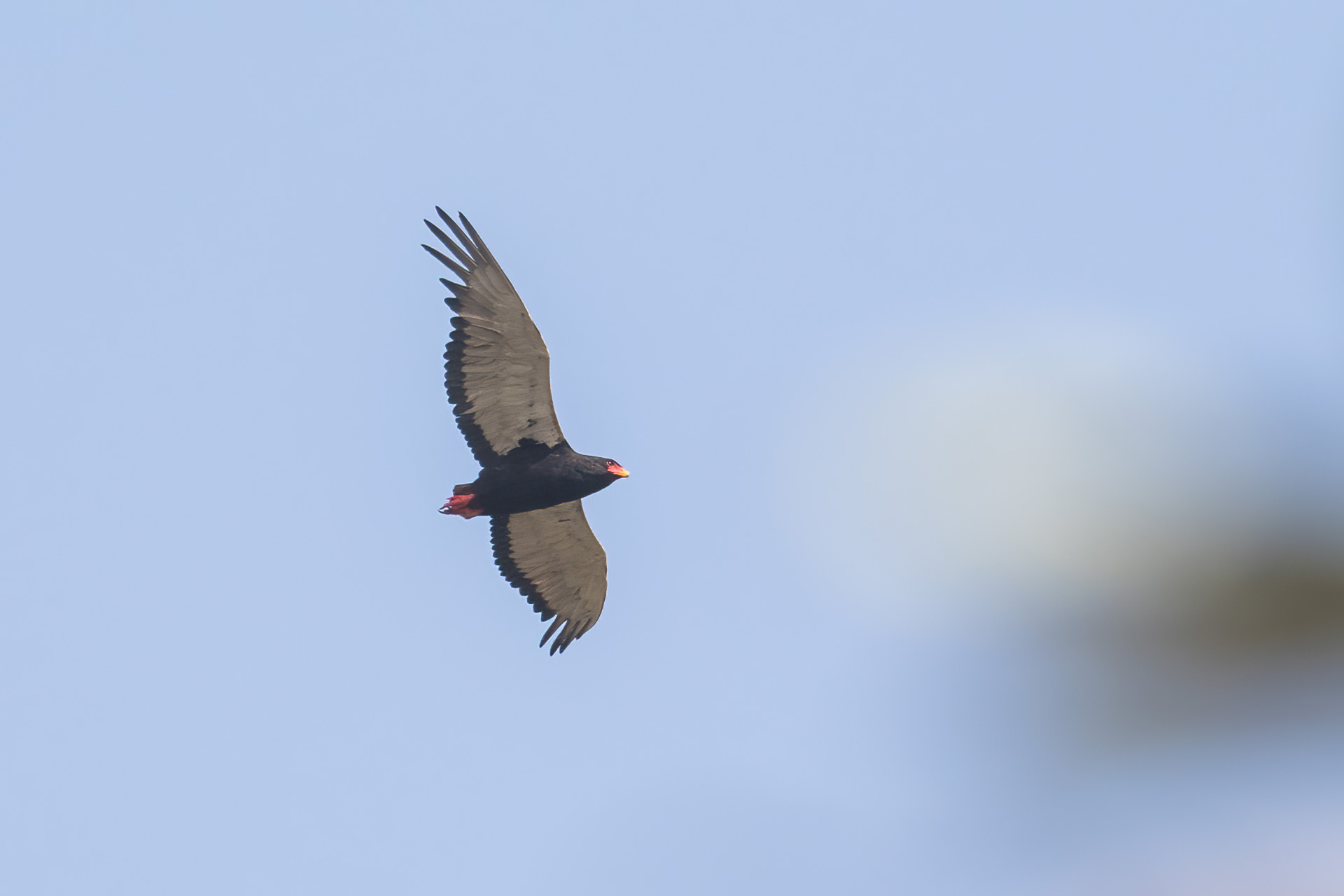
The afternoon was quite relaxed, but pleasant, and even though we didn’t have any new species, we had good number of mammals and raptors overall.
Day 9 - Thursday, February 9
On our way out of Niokolo Koba we encountered a herd of Roan Antelope, which was fantastic to see. Many individuals had Yellow-billed Oxpeckers on their backs, and Stone Partridge, Helmeted Guineafowl and Double-spurred Spurfowl could be seen nearby as well. However, it wasn’t until we got out of the park when we really hit a good number of raptors, starting with a new one for us: Grasshopper Buzzard! A Bateleur was seen nearby too, and not much further one Beaudouin’s Snake-Eagle, which could be seen far better than the previous one, two Brown Snake-Eagles probably displaying, one Wahlberg’s Eagle and a Lizard Buzzard could be found in a single stop! Once we were back in Wassadou saw another Brown Snake-Eagle and another Grasshopper Buzzard, just before it was time for lunch and a well-deserved break in the middle of the day before going out for a walk in the afternoon.
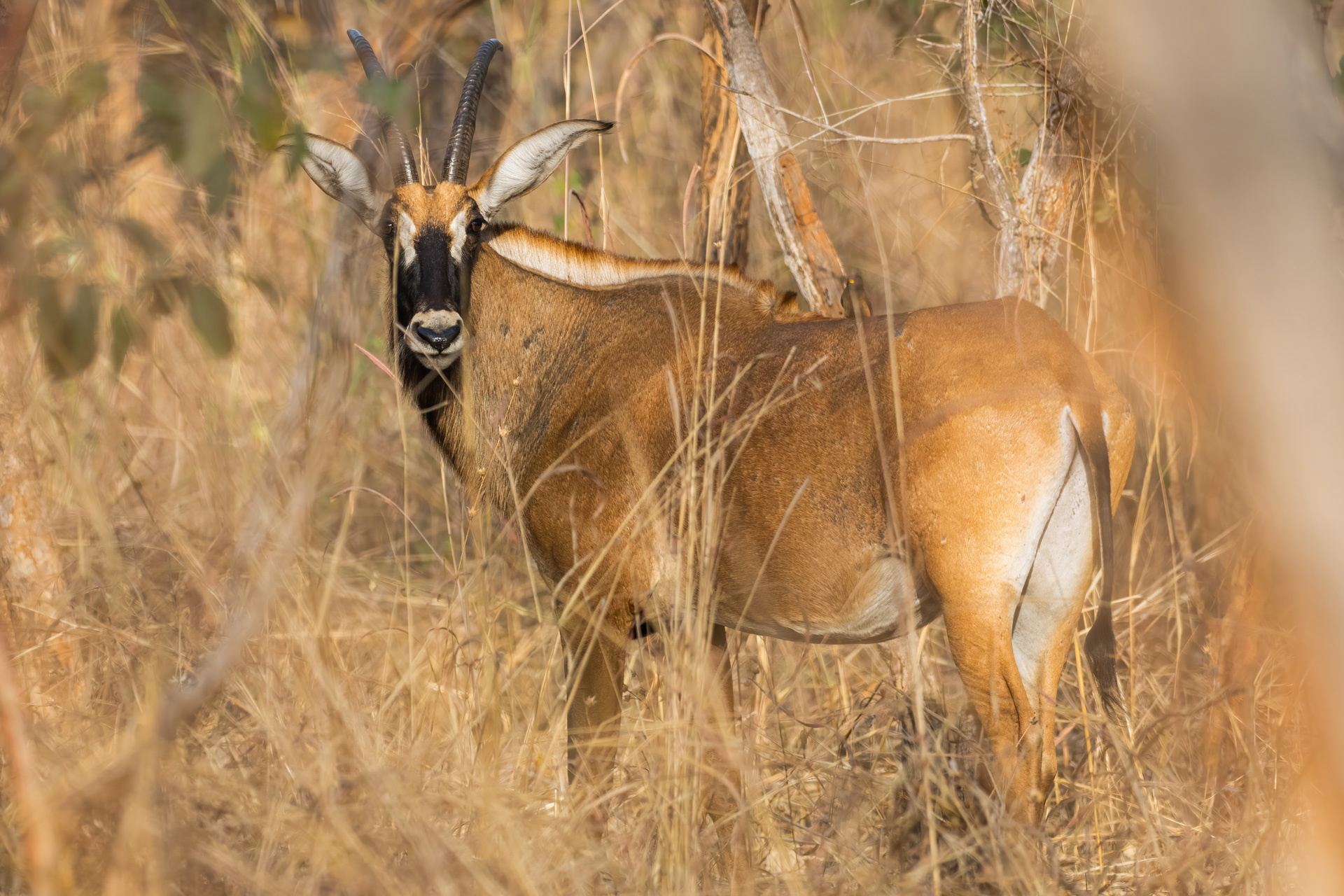
When we started walking it was still quite warm, so we did it slowly and stopped frequently in the shade. Some new birds showed up, like the fantastic Adamawa Turtle-Dove. Also, up to 10 species of raptors could be seen in about two hours and a half. We had a good dinner and went to rest to get ready for our two boat trips the following day.
Day 10 - Friday, February 10
Today we took two boat trips in the Gambia River, one in the morning and one in the afternoon. Both were absolutely superb and certainly a highlight of the trip. In the morning we started observing the quite difficult White-backed Night-Heron, one adult and one juvenile. Then, four species of kingfishers showed extremely well, as well as Red-throated and Little Bee-eaters. The photography opportunities were really good for those who carried cameras although the experience was highly enjoyed by all participants. When we were going back to camp, one of the African Fish Eagles near Wassadou decided to entirely open its wings to sunbathe at the exact moment we were passing by – it was almost magical! We had some time before lunch to enjoy at the viewpoint by the river and scan for raptors and other birds. After seeing African Hawk-Eagle, African Harrier-Hawk and Wahlberg’s Eagle, it was the time for another new species for us: an immature Martial Eagle showed up by the river and started to soar up, certainly a bit too high but clearly identifiable by the group with our binoculars, scopes, and cameras. Not the most satisfying view but a Martial Eagle indeed!
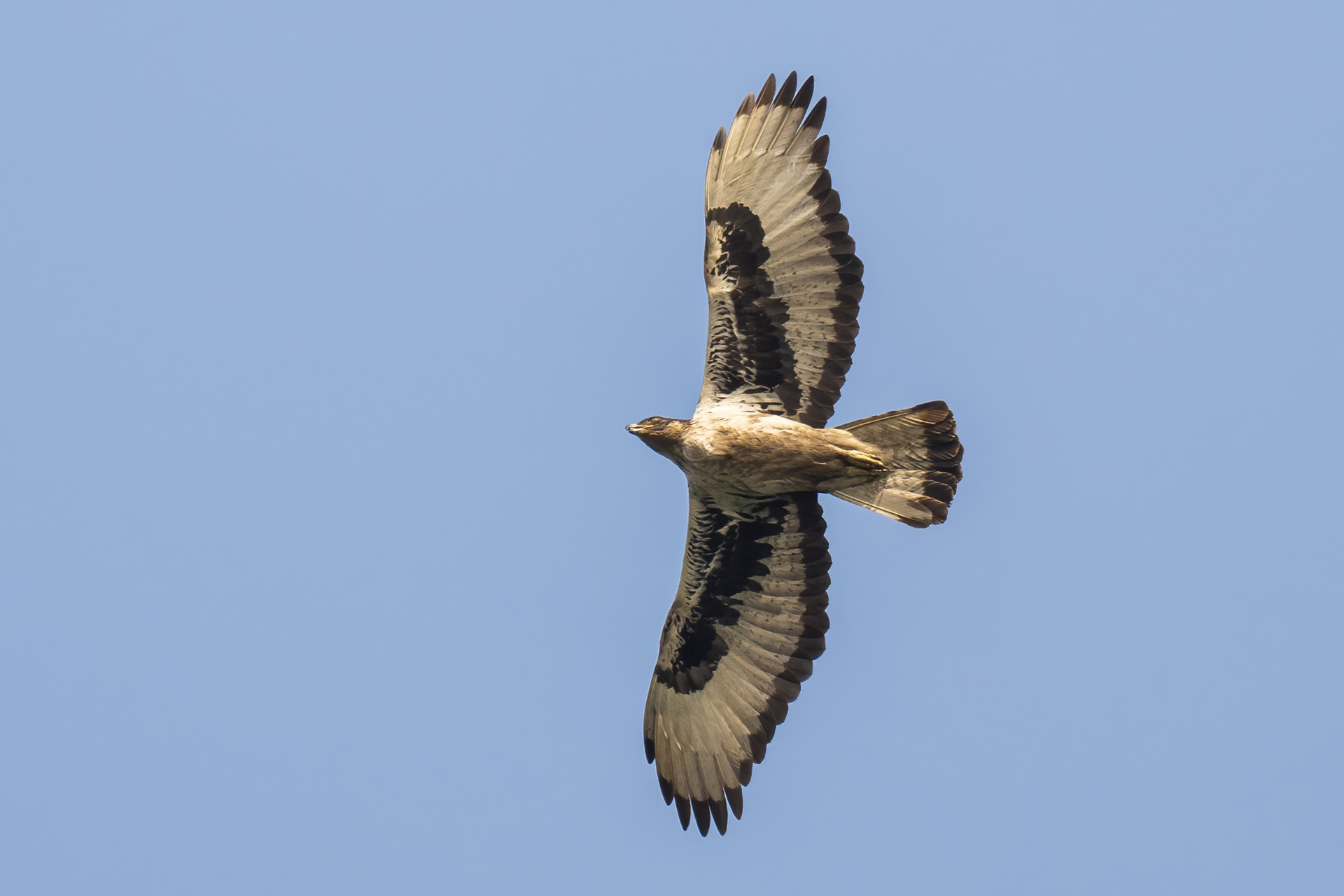
The boat trip in the afternoon seemed a bit slower in terms of number of birds, but we still hit the 42 species mark (46 in the morning) with some interesting findings. For starters, we found a Palm-nut Vulture nest with and adult inside. An Osprey flying over the river also made its appearance. However, the best was still to come, with great views of a single Banded Snake-Eagle that was found drinking by the river and later flying up to a tree where we could watch and photograph it. This was the perfect way to finish a great day!
Day 11 - Saturday, February 11
Today we had our longest drive, from Wassadou all the way to Toubacouta. However, we made it all the way to Kaolack in order to have lunch and then have a more relaxed afternoon with some nice birding sites to explore in the area. We made several stops in the morning, with several Wahlberg’s Eagles (this turned out to be the most common eagle on the trip). But the most productive short stop was next to a water hole we already knew, where we were hoping some falcons and other raptors would be looking for small passerines. Indeed, after just a few minutes watching a Red-necked Falcon and a Gray Kestrel, a large falcon made its appearance terrorizing all the small birds near the water. An immature Lanner Falcon indeed. We enjoyed watching this fast falcon soaring up and diving in an attempt of catching maybe one of the many Sparrow-Larks present. We didn’t have to wait long, as when least expected, this same Lanner came back so fast, that when we saw it again it was carrying a small bird in its talons while the Red-necked Falcon was chasing maybe in an attempt to pirate its prey. After this great spectacle we continued our drive.
In the afternoon we had a very pleasant walk across mixed patches of farmland, acacia savannah and riverine forest, with a good variety of birds, but with the only addition of the Swallow-tailed Bee-eater for us.
Day 12 - Sunday, February 12
Today we had another boat trip, this time from the town of Toubakouta into the Delta du Saloum. This was, again, a fantastic experience, that allowed us to get closer to some difficult birds. Almost right away we got a Goliath Heron and very shortly afterwards, the remarkably difficult to see White-crested Bittern! (also known as White-crested Tiger-Heron). After seeing several species of shorebirds, gulls and terns and the habitat-restricted Mouse-brown Sunbird (formerly known as Mangrove Sunbird), we put foot on land, and took a short walk on the island of Sipo. Here we had some fantastic birds that were new to us and were celebrated by the group: several Four-banded Soundgrouse, a pair of Northern White-faced Owls and a single Black Scimitarbill.
In the afternoon we visited the nearby village of Sandicoly, and even though we didn’t find as many raptors as we hoped, we had a great time with a nice Montagu’s Harrier, African Harrier-Hawk and some other birds that included Pearl-spotted Owlet, Fine-spotted Woodpecker, three different species of rollers, Lesser and Greater Honeyguide and Blackcap Babblers. All in all, a great day!
Day 13 - Monday, February 13
First thing in the morning, before breakfast, we checked out the hotel surroundings for a pair of Grayish Eagle-Owls that we knew were around. We didn’t have to wait long before one of the owls perched on a roof right in front of us. We enjoyed the presence of the two owls and a Marsh Mongoose until we had to go for breakfast. Then, we headed to the Sangako Forest, which ended up being one of the best mornings of the tour. We started driving and stopping along the road whenever we had any birds of interest: this way we got several migrant passerines like Melodious and Western Subalpine Warbler, as well as some resident Lavender and Black-rumped Wabills among many others. However, we hit the jackpot when Ismaila, our proficient local guide, found an impressive adult Martial Eagle perched nearby. We could enjoy this bird at a relatively close distance and could track its movements inside the forest for a good amount of time, relocating it after several short flights. It was, without question, another highlight of the tour! Shortly afterwards, we added a Booted Eagle to our raptor list and another Verreaux’s Eagle-Owl that was found by Suzanne at a very short distance! To finish up the morning, we got our best views of another Grasshopper Buzzard just when wind started peaking up.
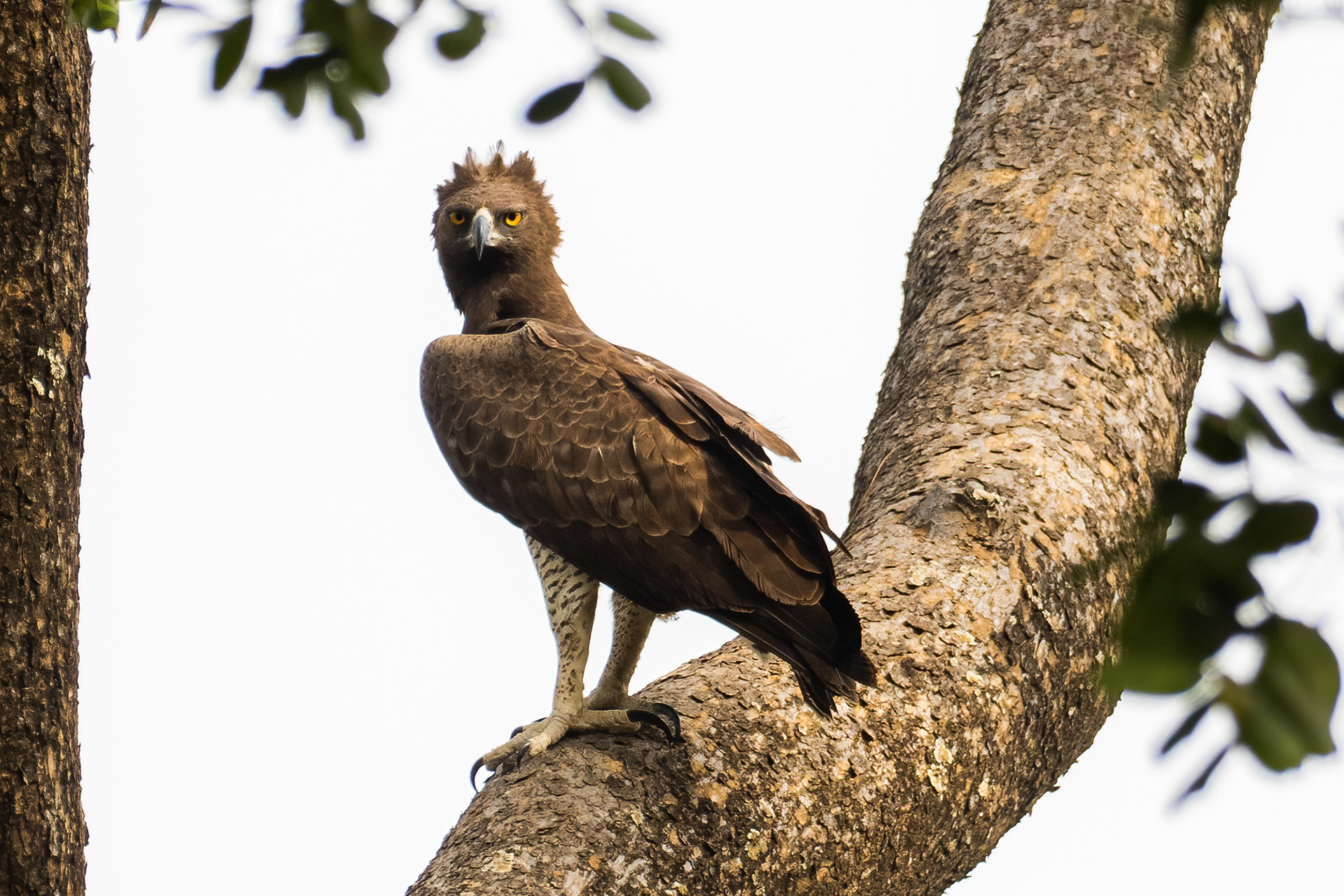
Wind was quite strong, and dust was blowing so we decided to postpone our scheduled boat trip take it easy in the afternoon and walked the hotel grounds in Toubakouta. It ended up being a good decision, as we got good views and could take pictures of some birds and, when least expected, an adult Lanner Falcon flew by at close distance carrying some prey! It was a great way to finish our day.
Day 14 - Tuesday, February 14
Even though the forecast didn’t look great, we had a very nice and pleasant boat trip during our last morning in Senegal. We had more photography opportunities with terns, gulls and shorebirds, and enjoyed the presence of a good number of roosting migrating Black Kites in the mangroves. It was a fantastic way to finish our trip before heading back to Dakar for our flight back home.
I want to thank all the participants for making this a fully enjoyable and memorable trip for everyone involved. Also, to our fantastic local guide Ismaila and excellent driver Abdou, for their hard work and professionalism. I believe it’s been a great tour to Senegal and a fair example of what Western Africa can offer to raptor enthusiasts!
JOIN THE 2024 EDITION OF OUR SENEGAL RAPTOR TOUR

